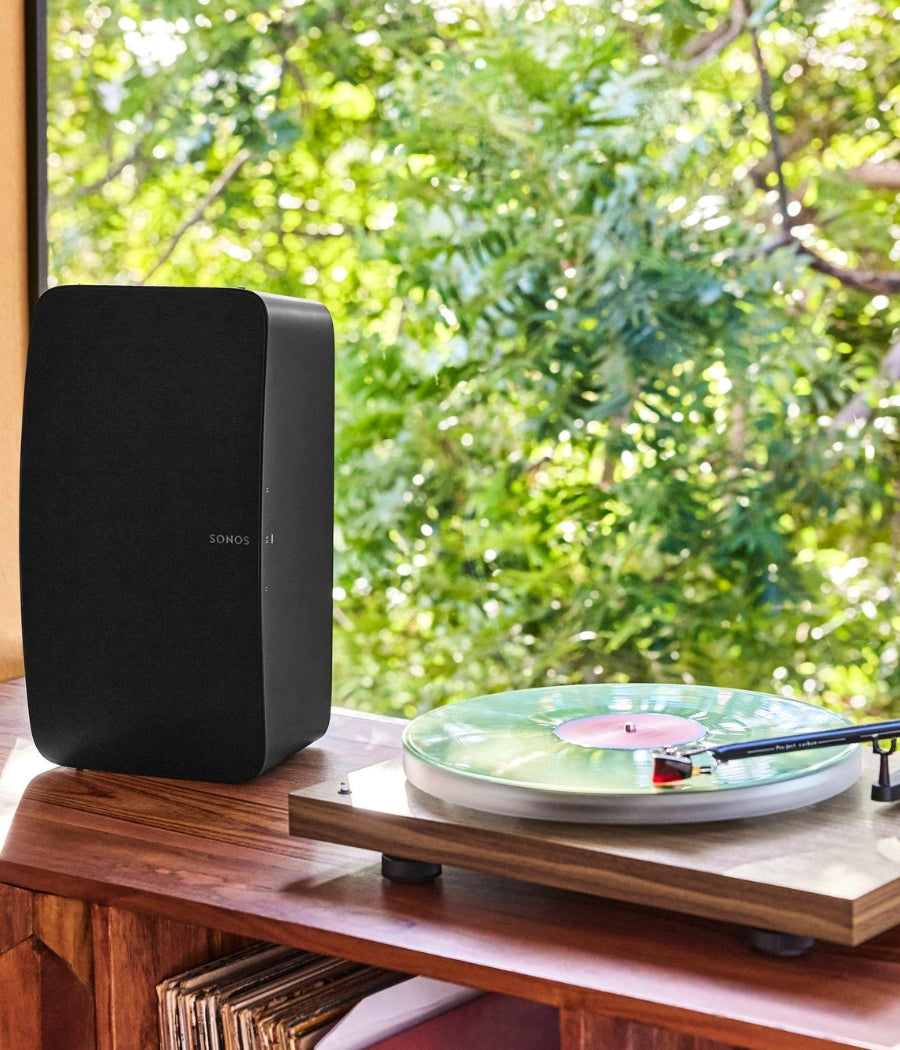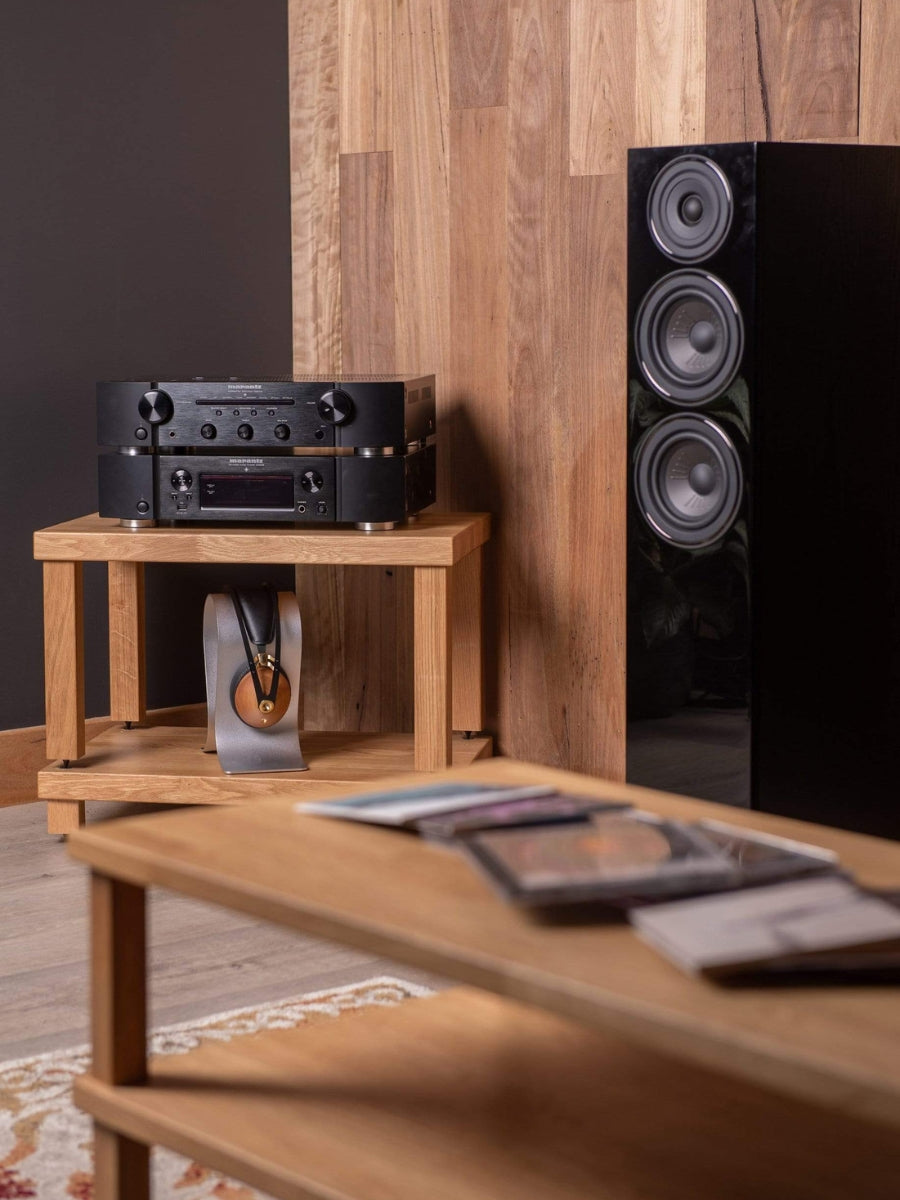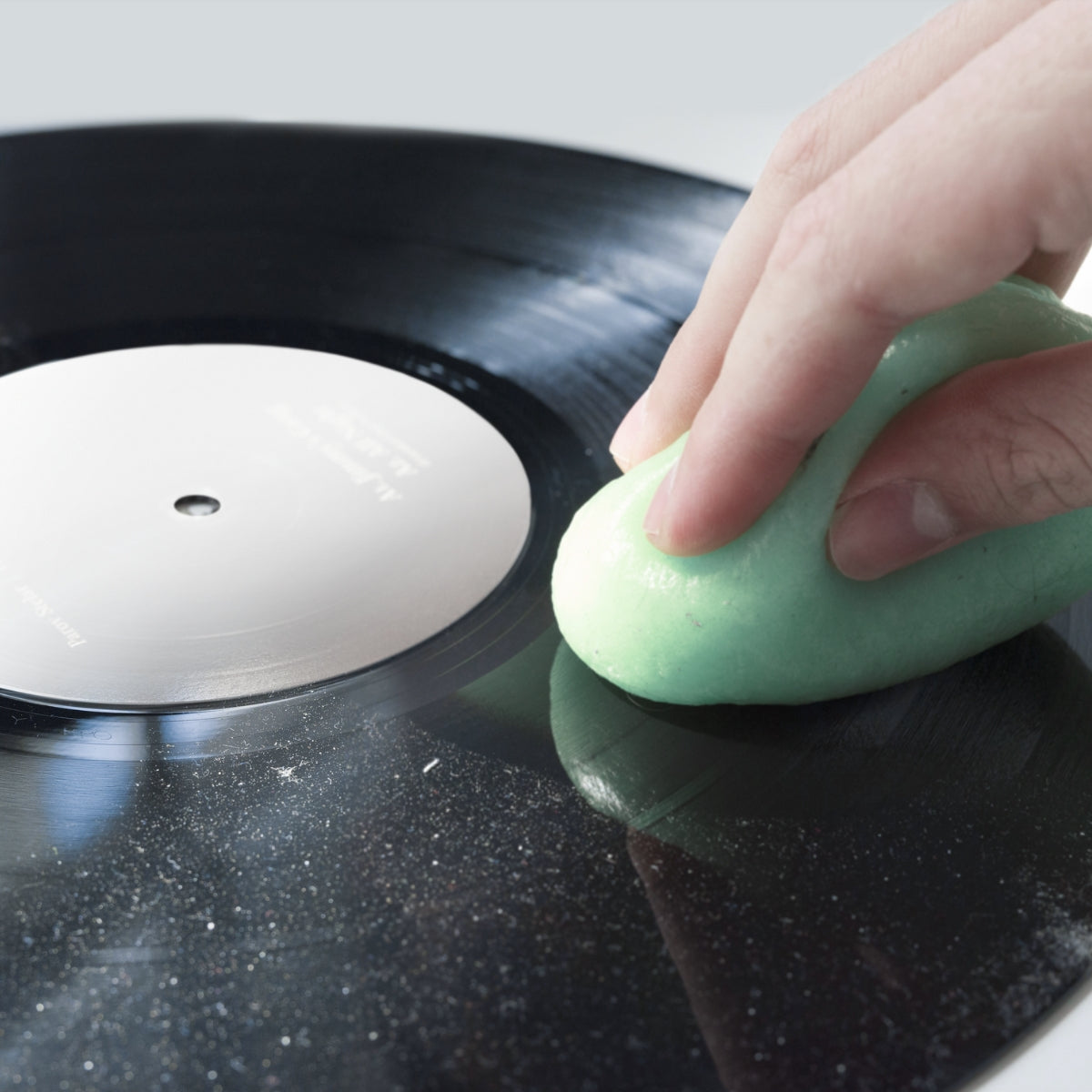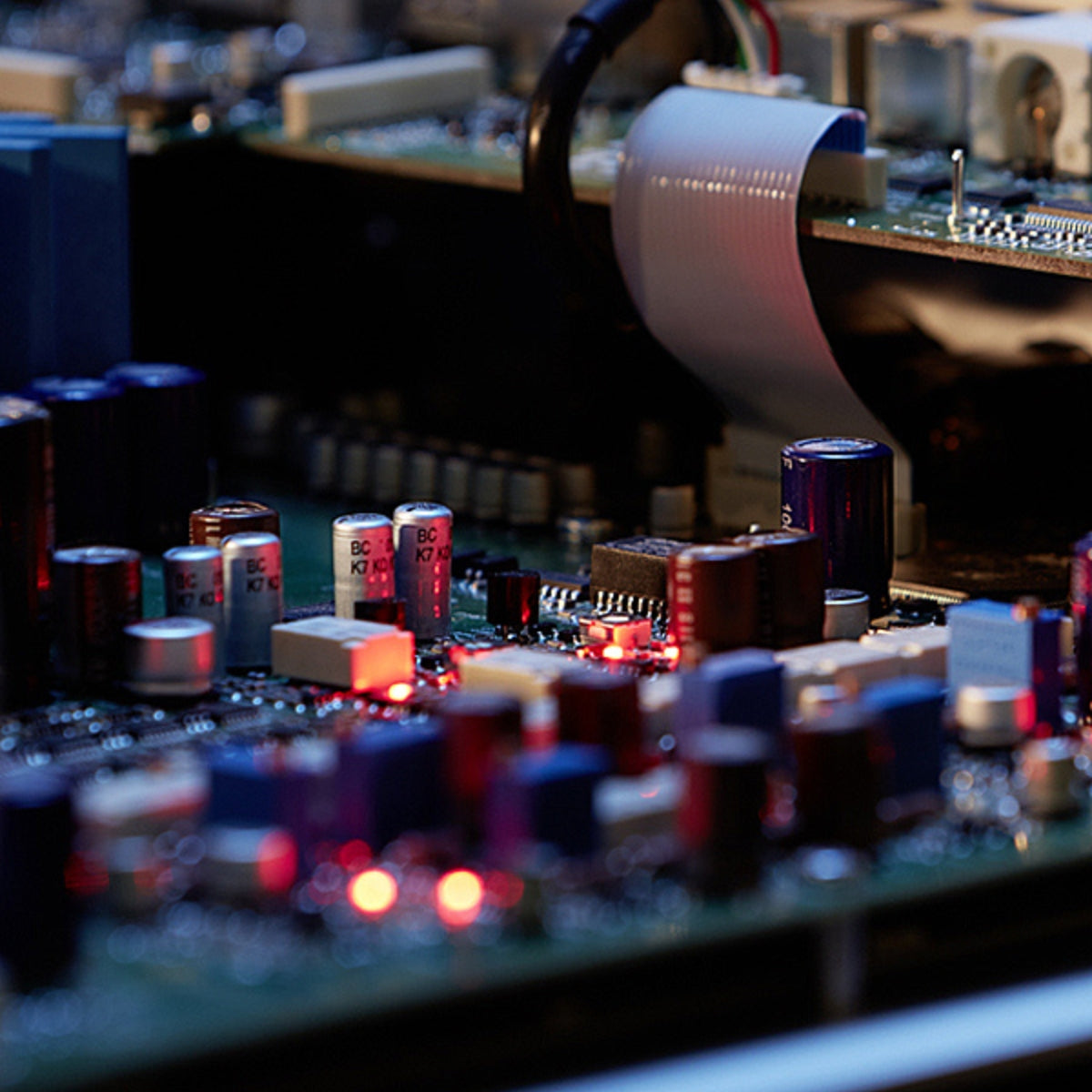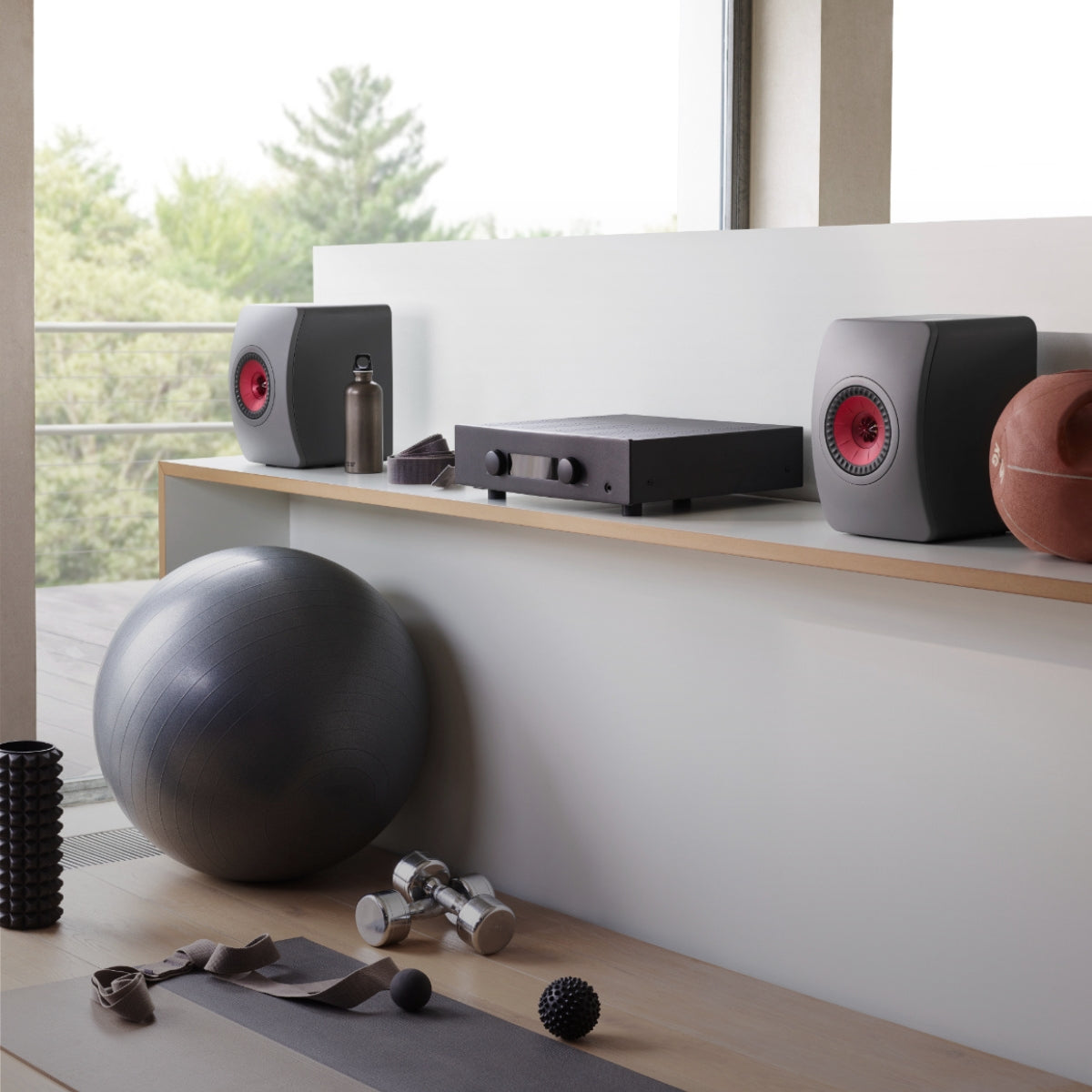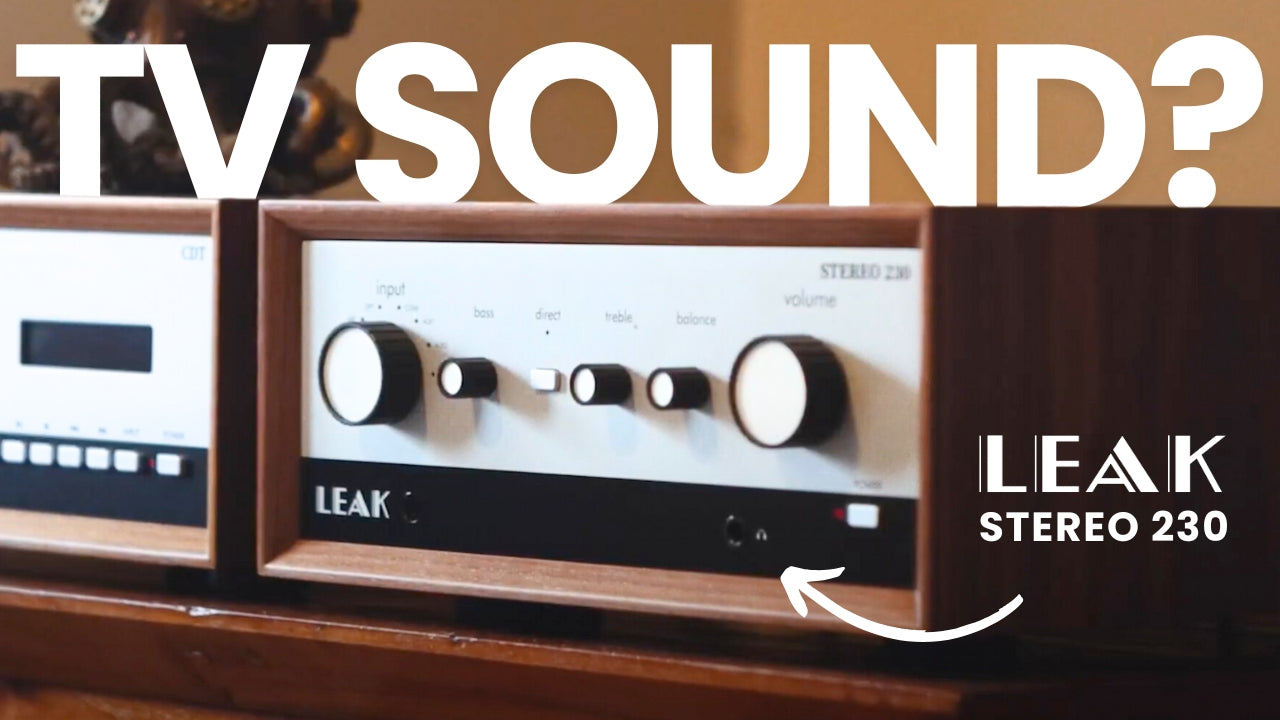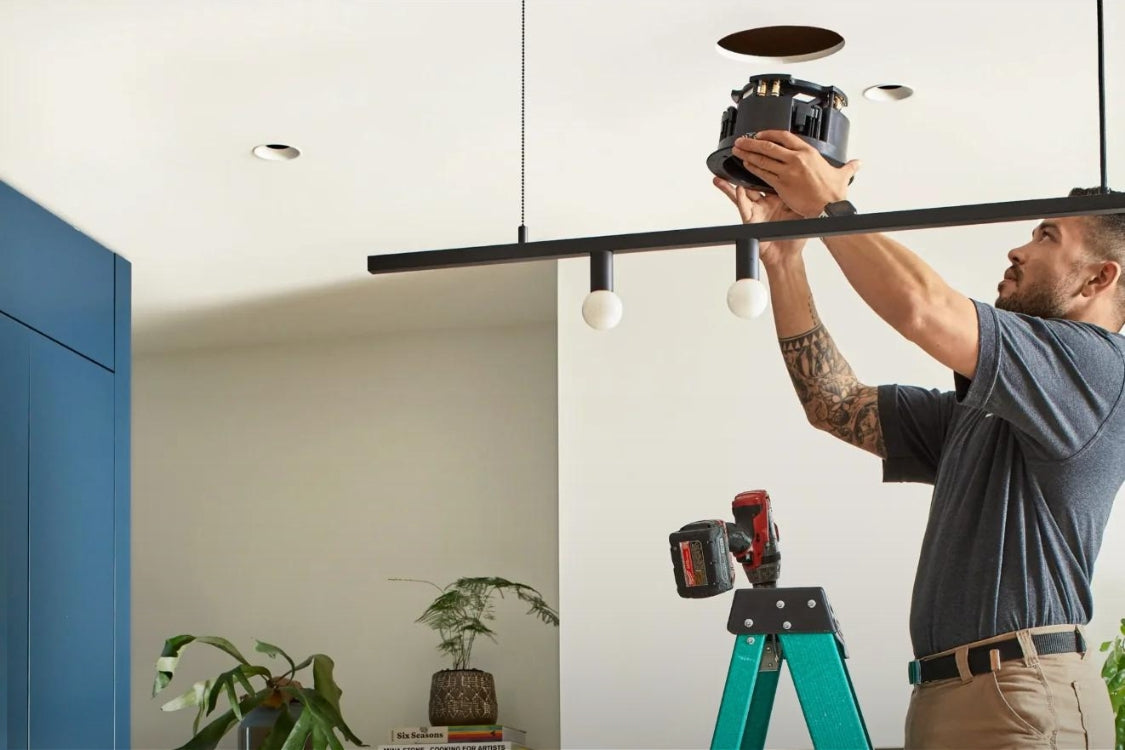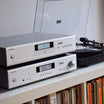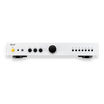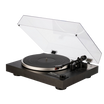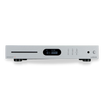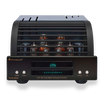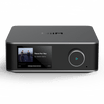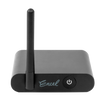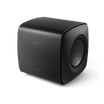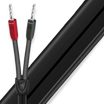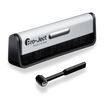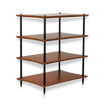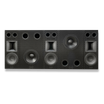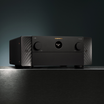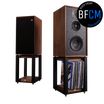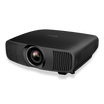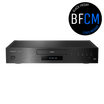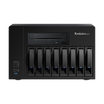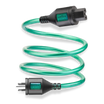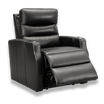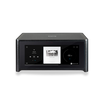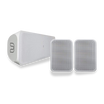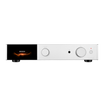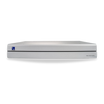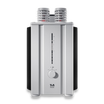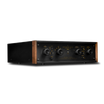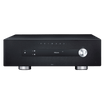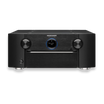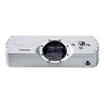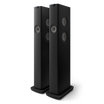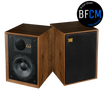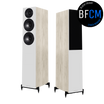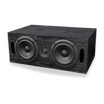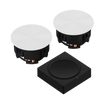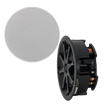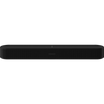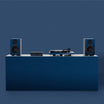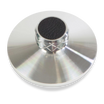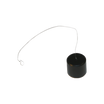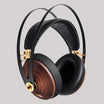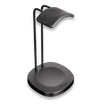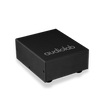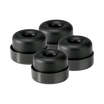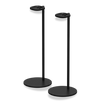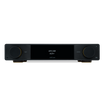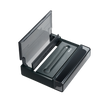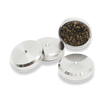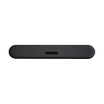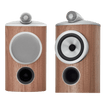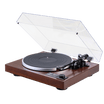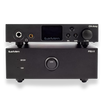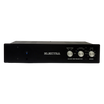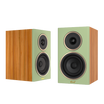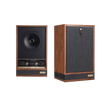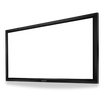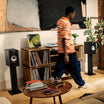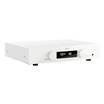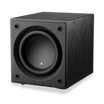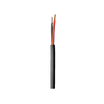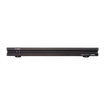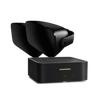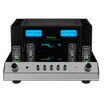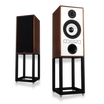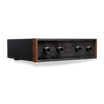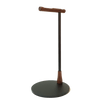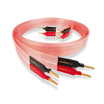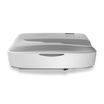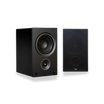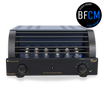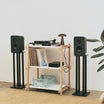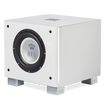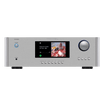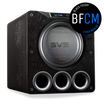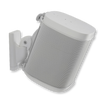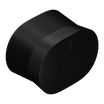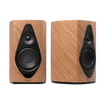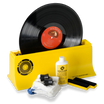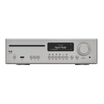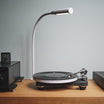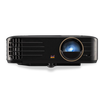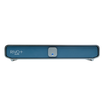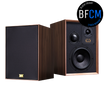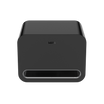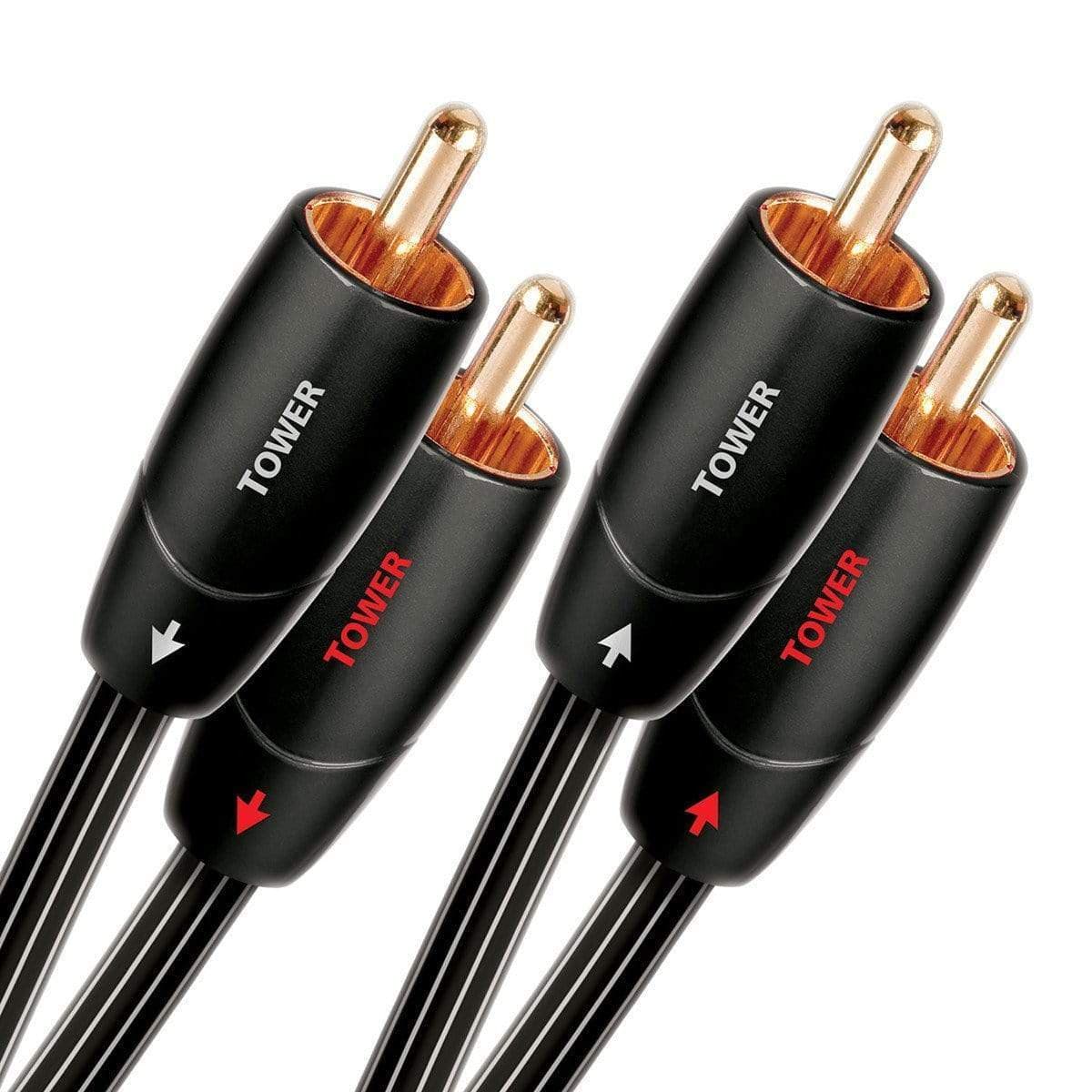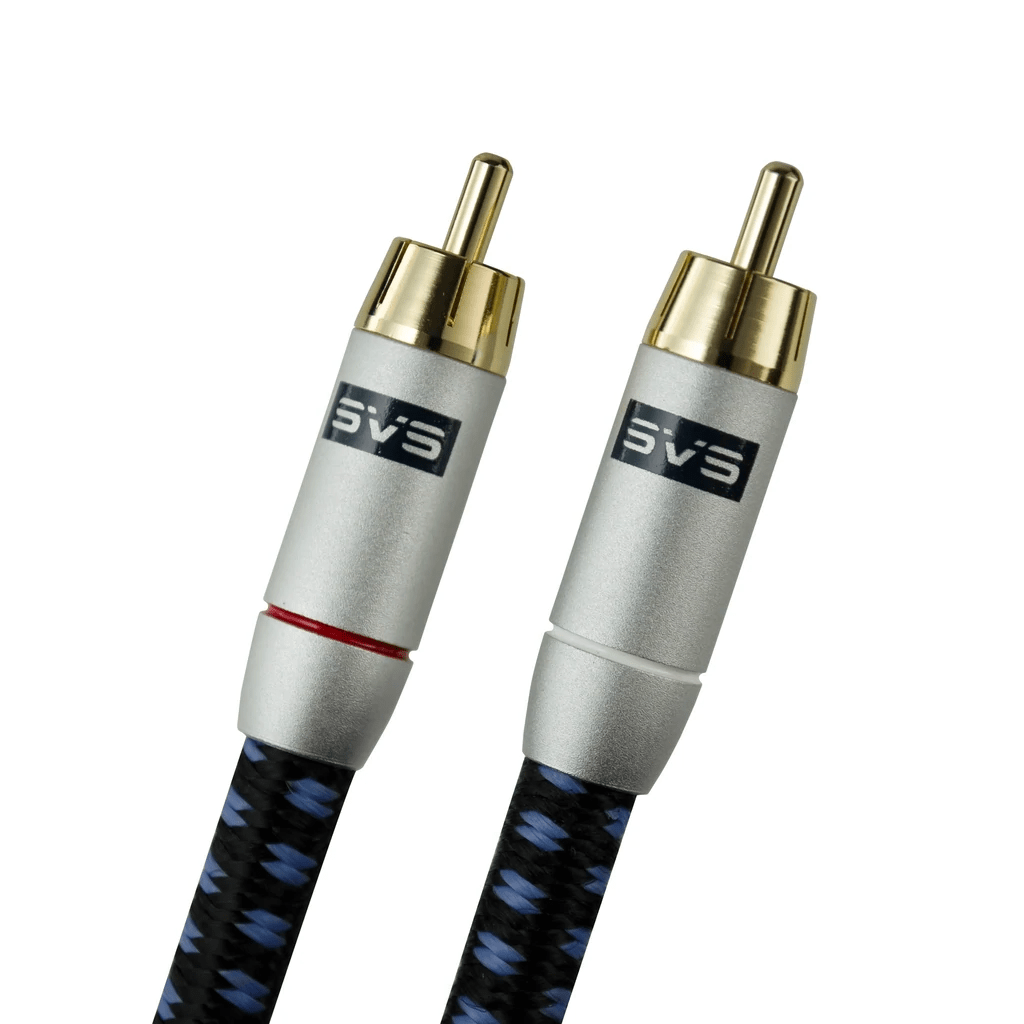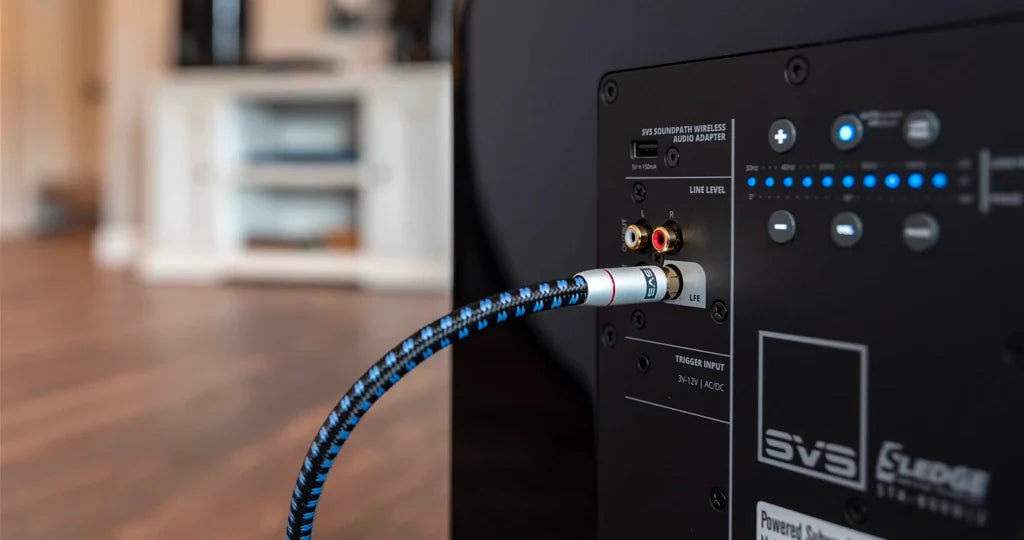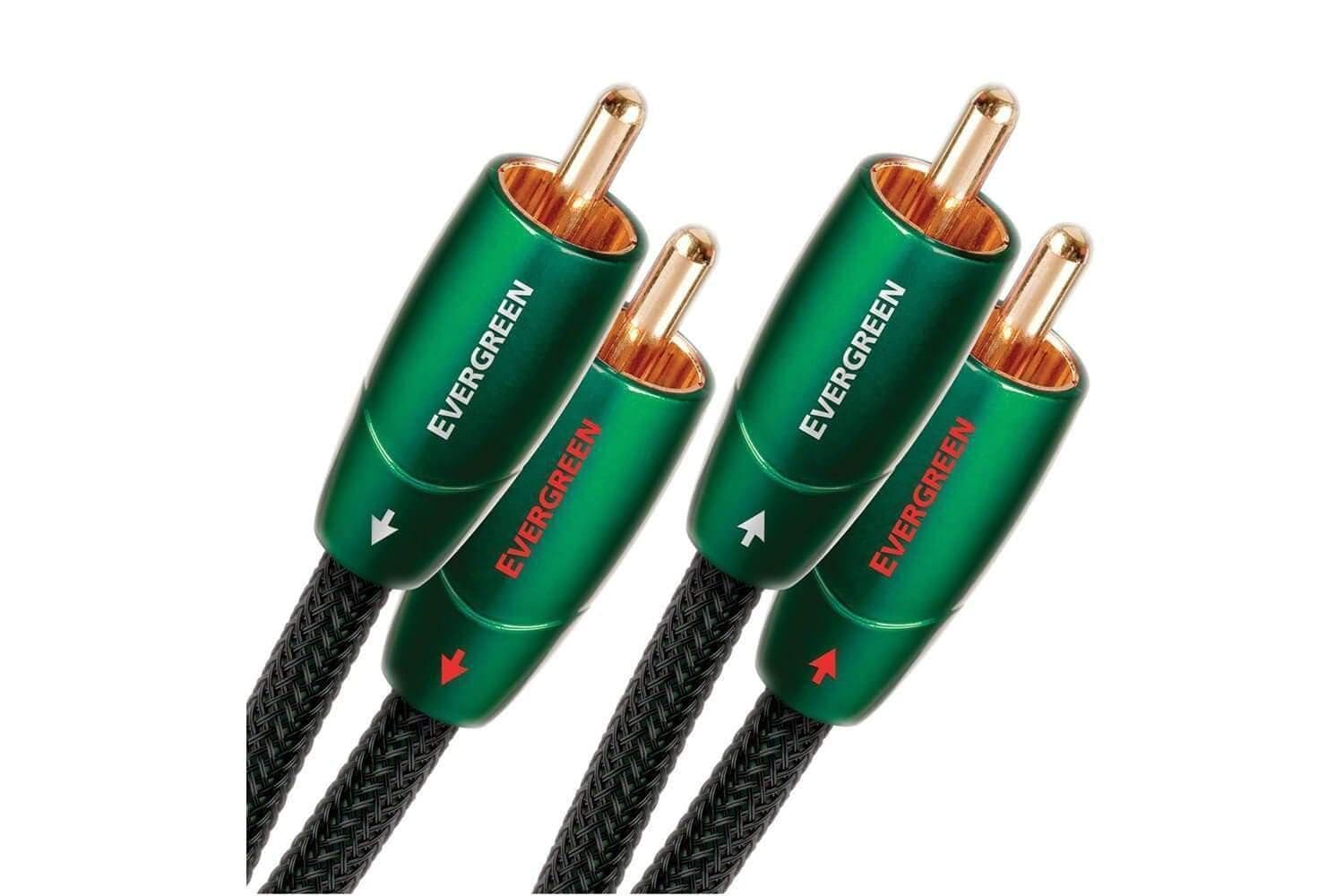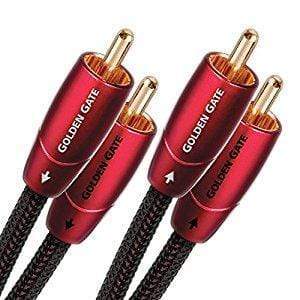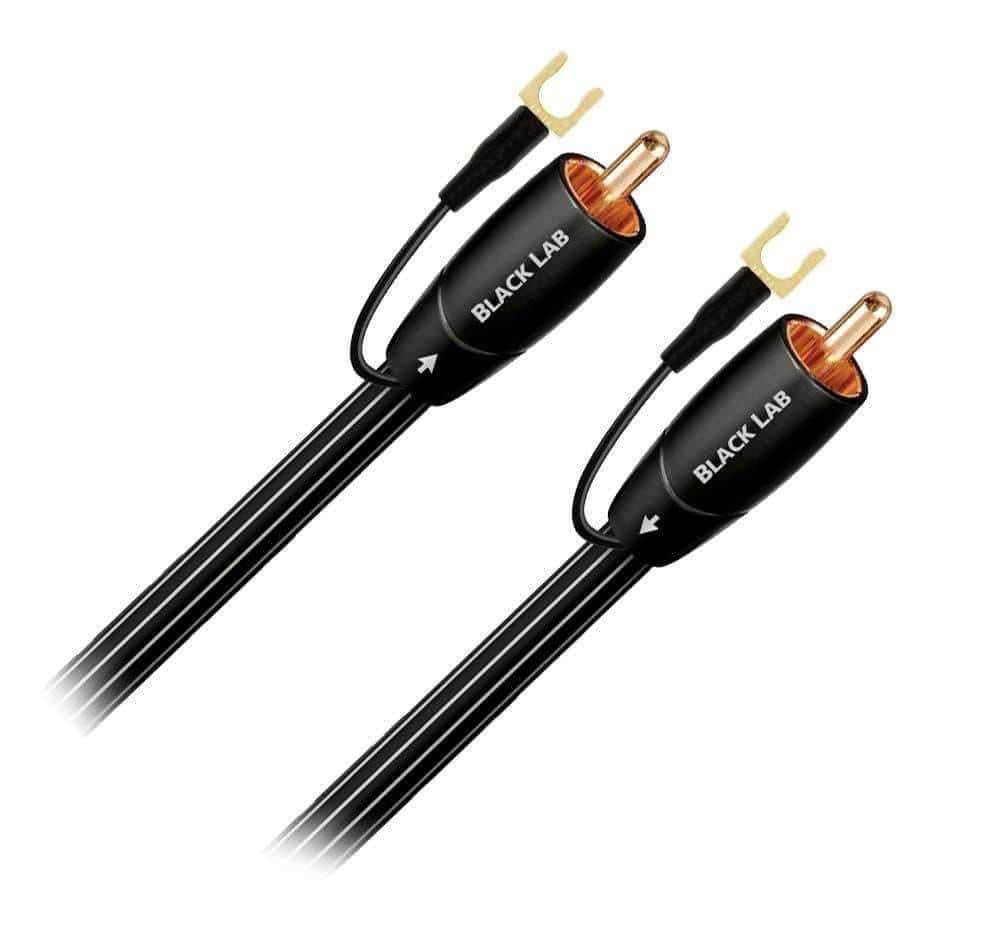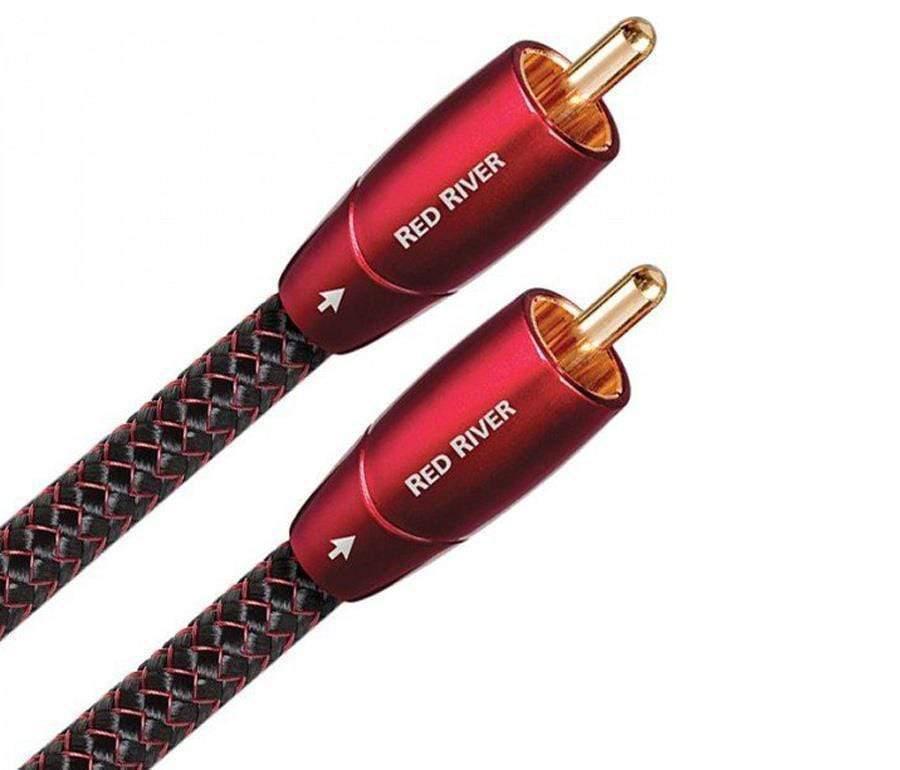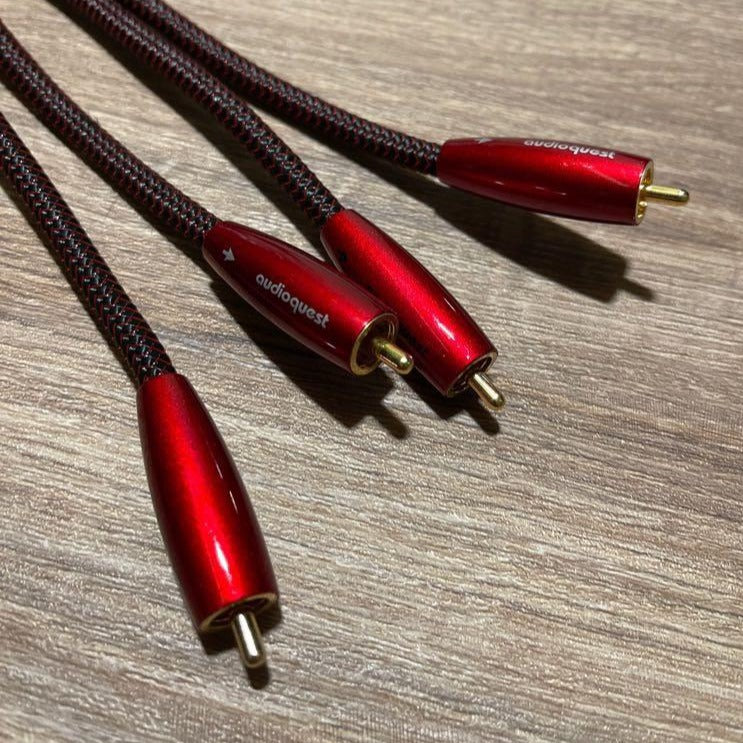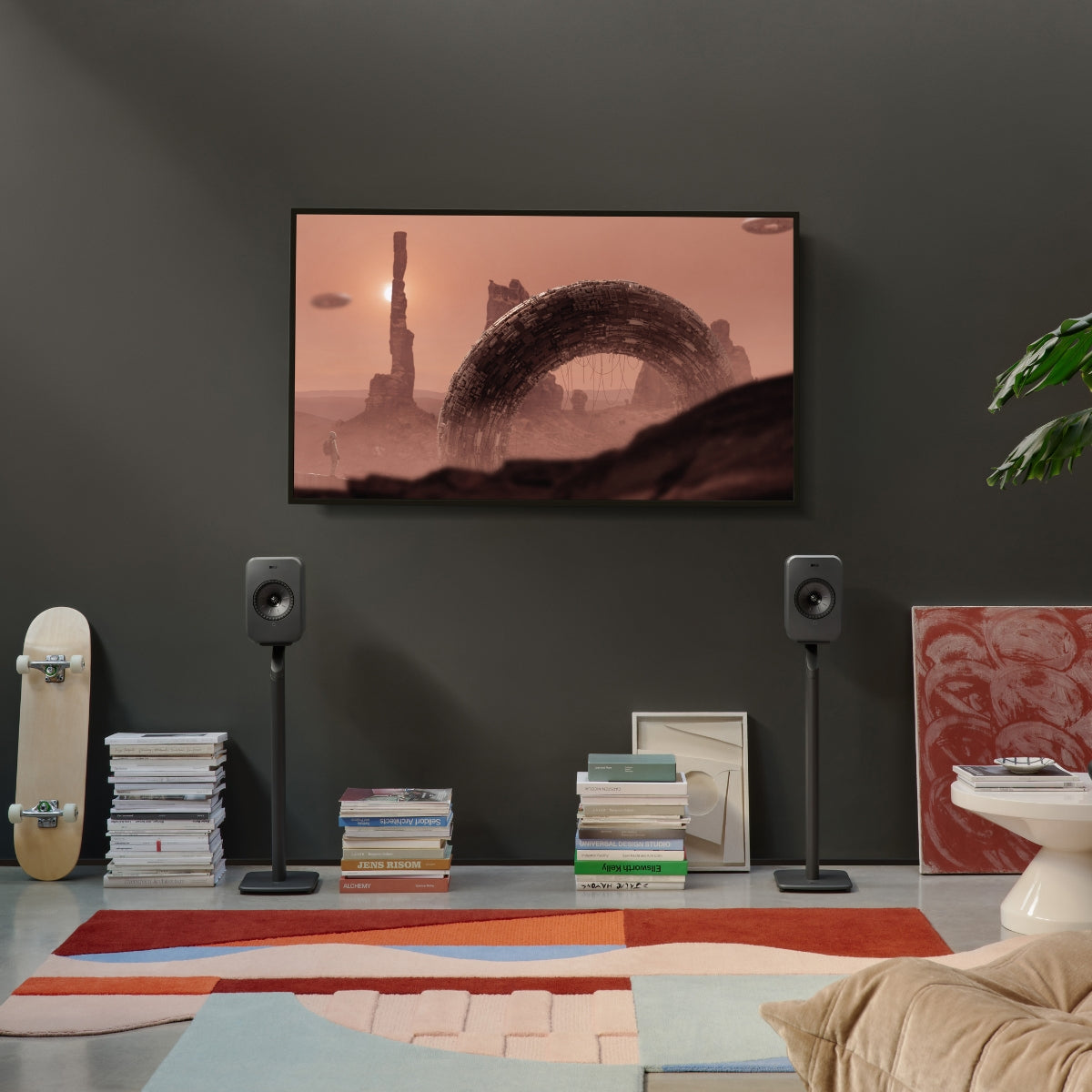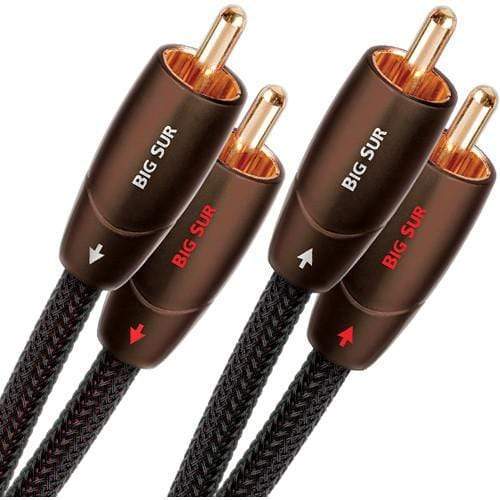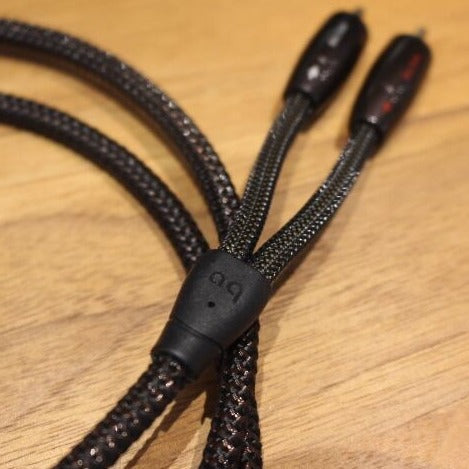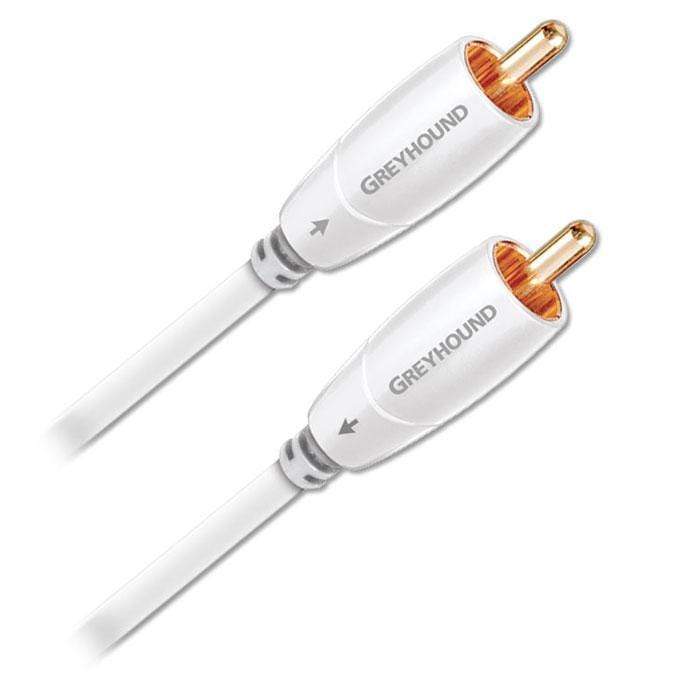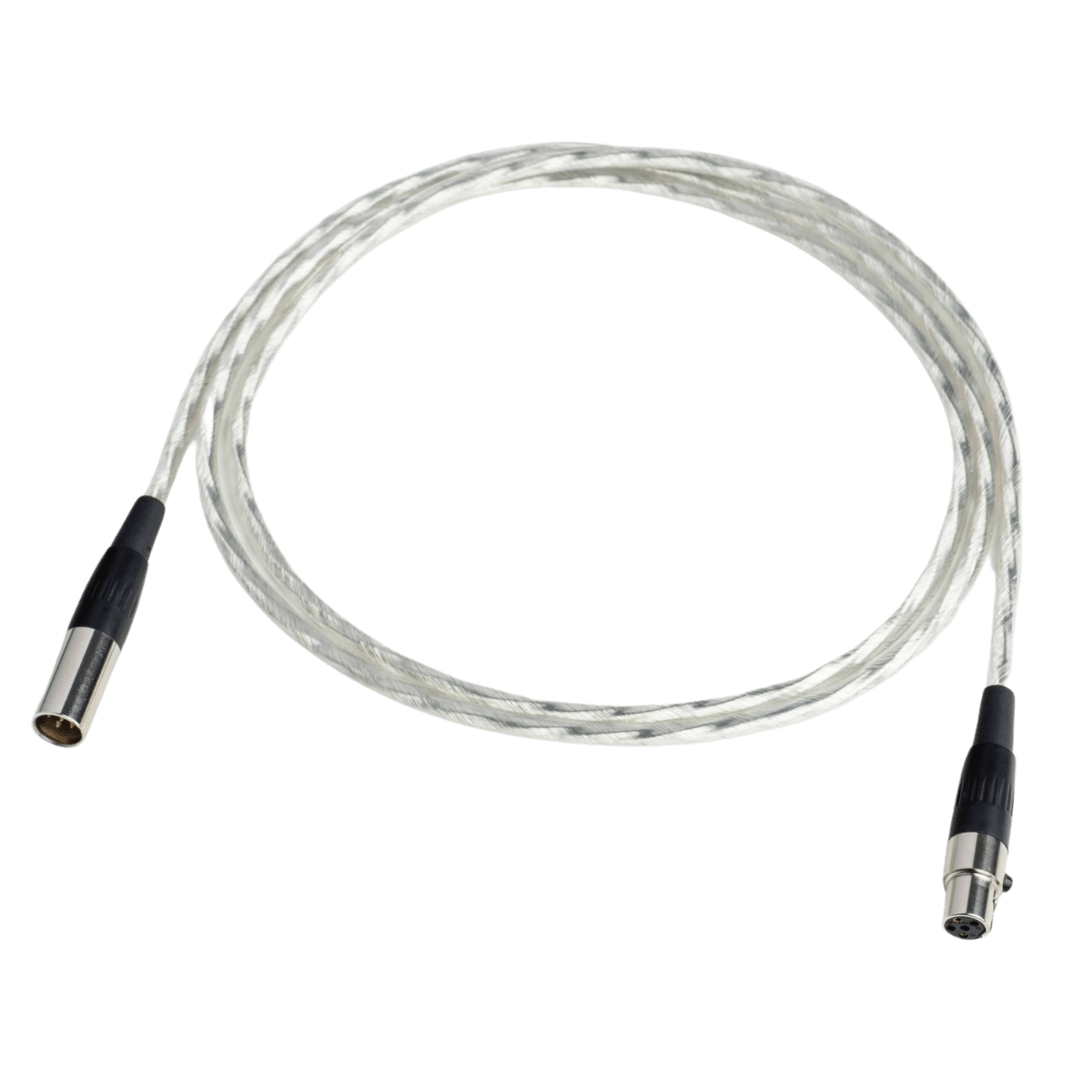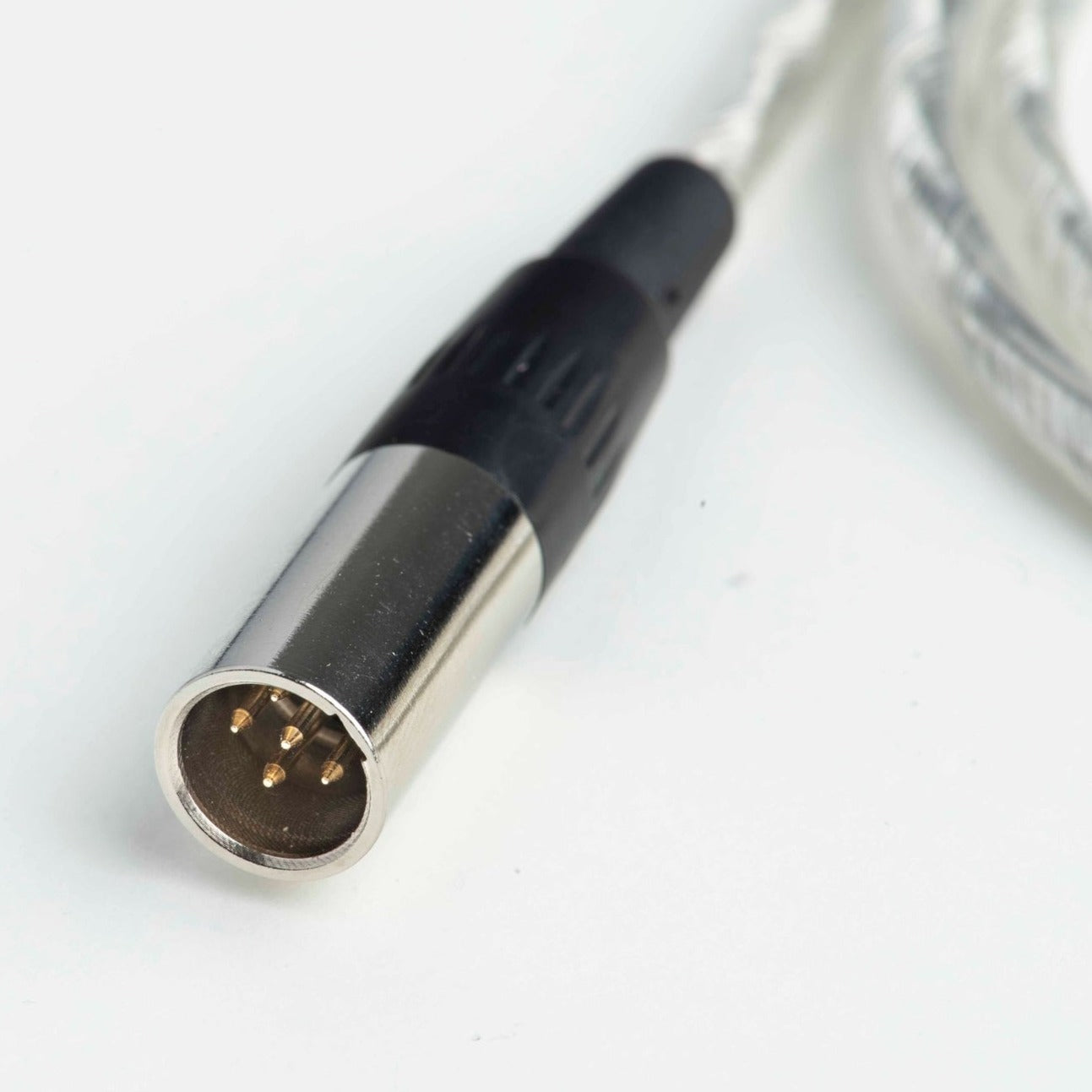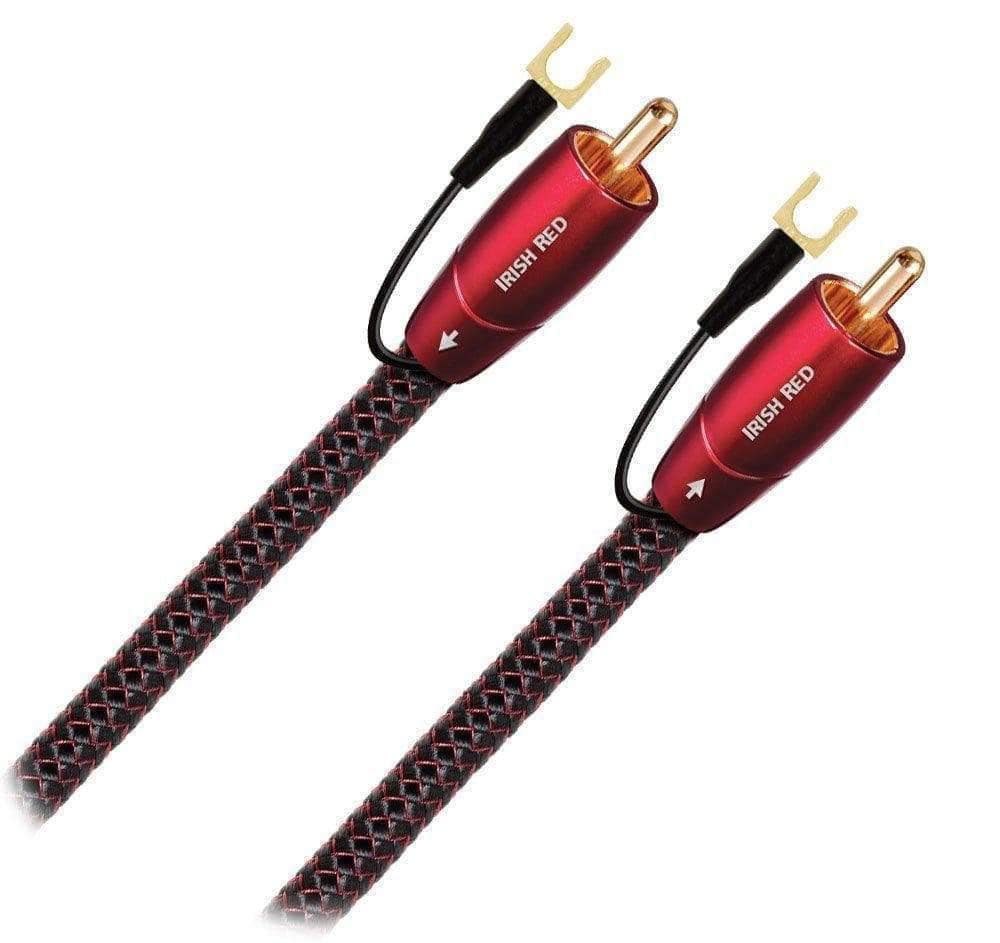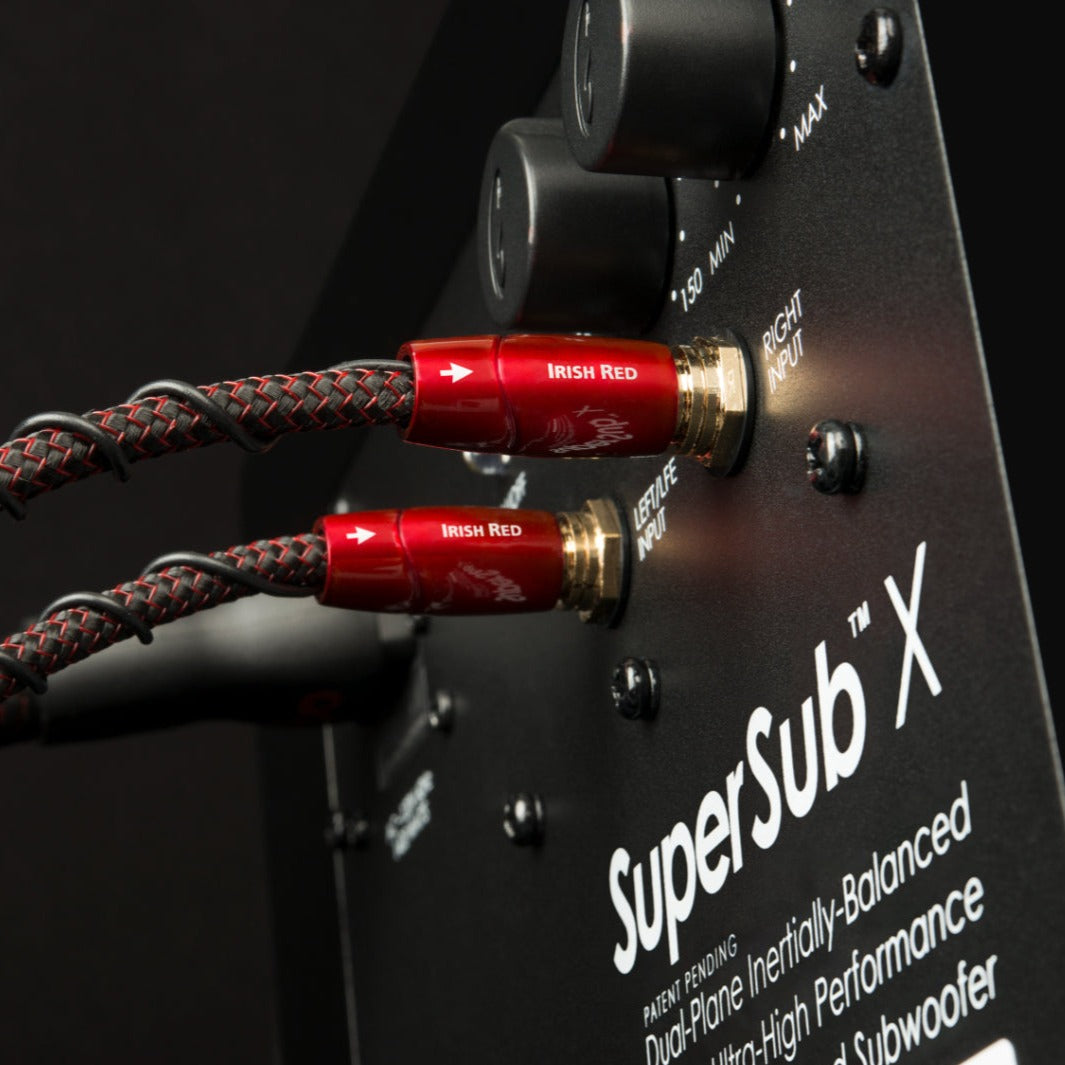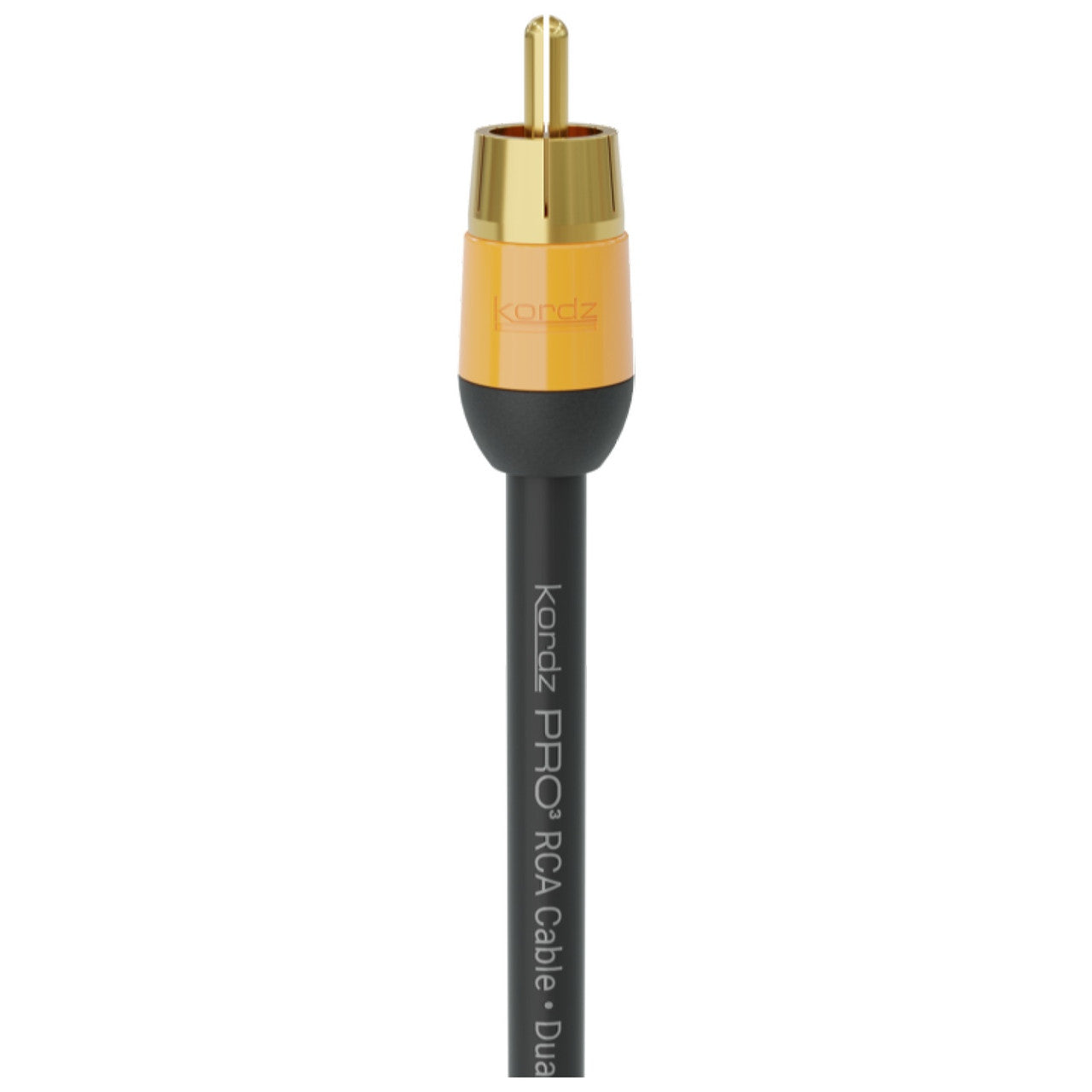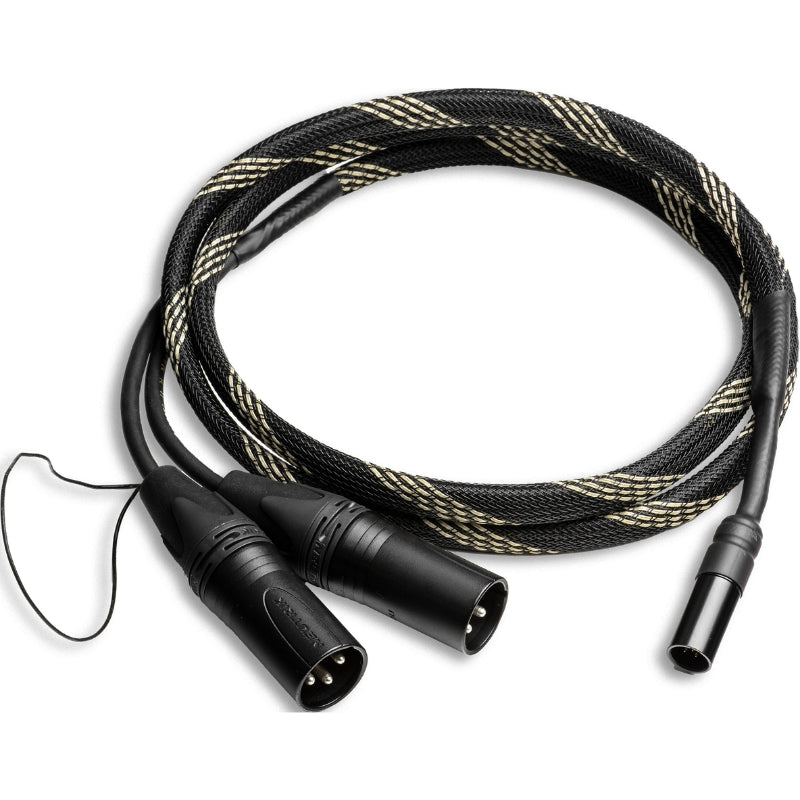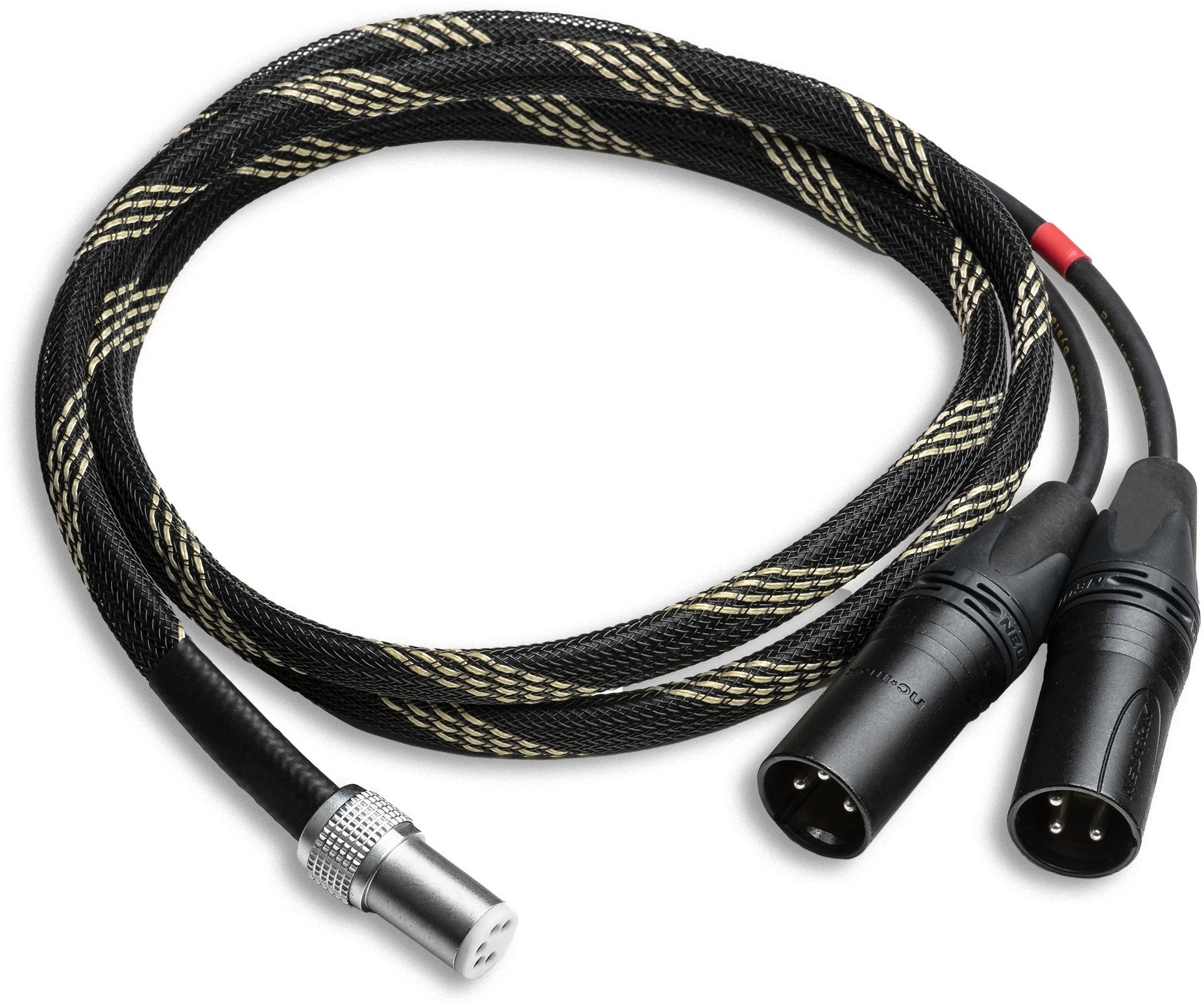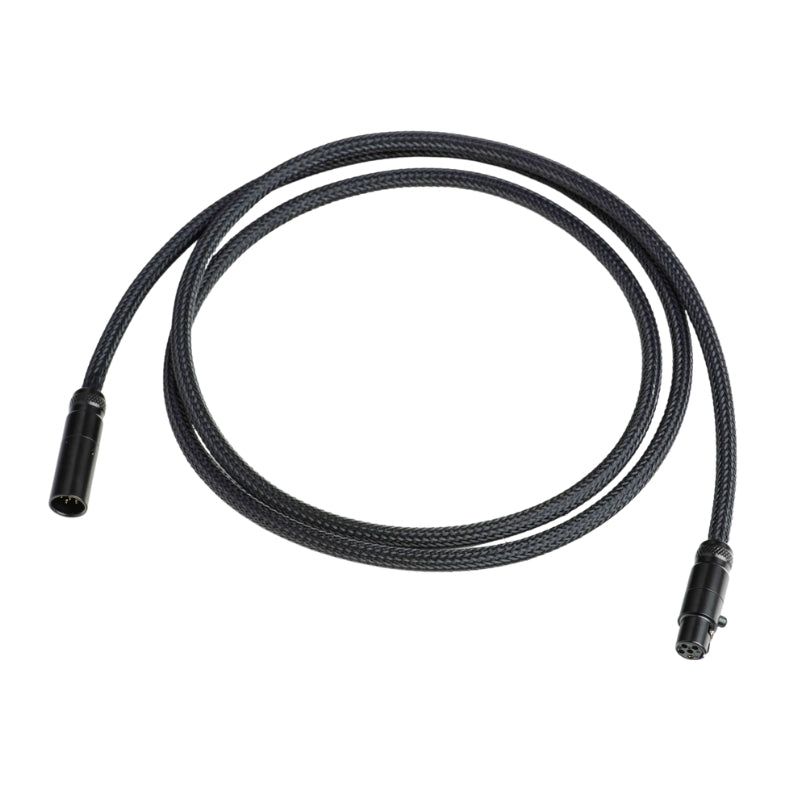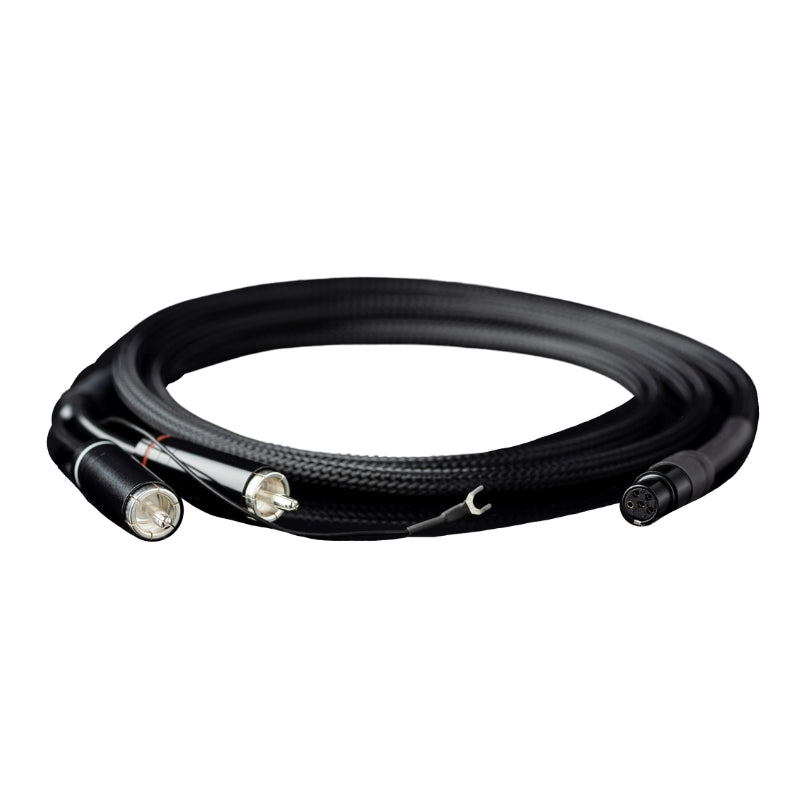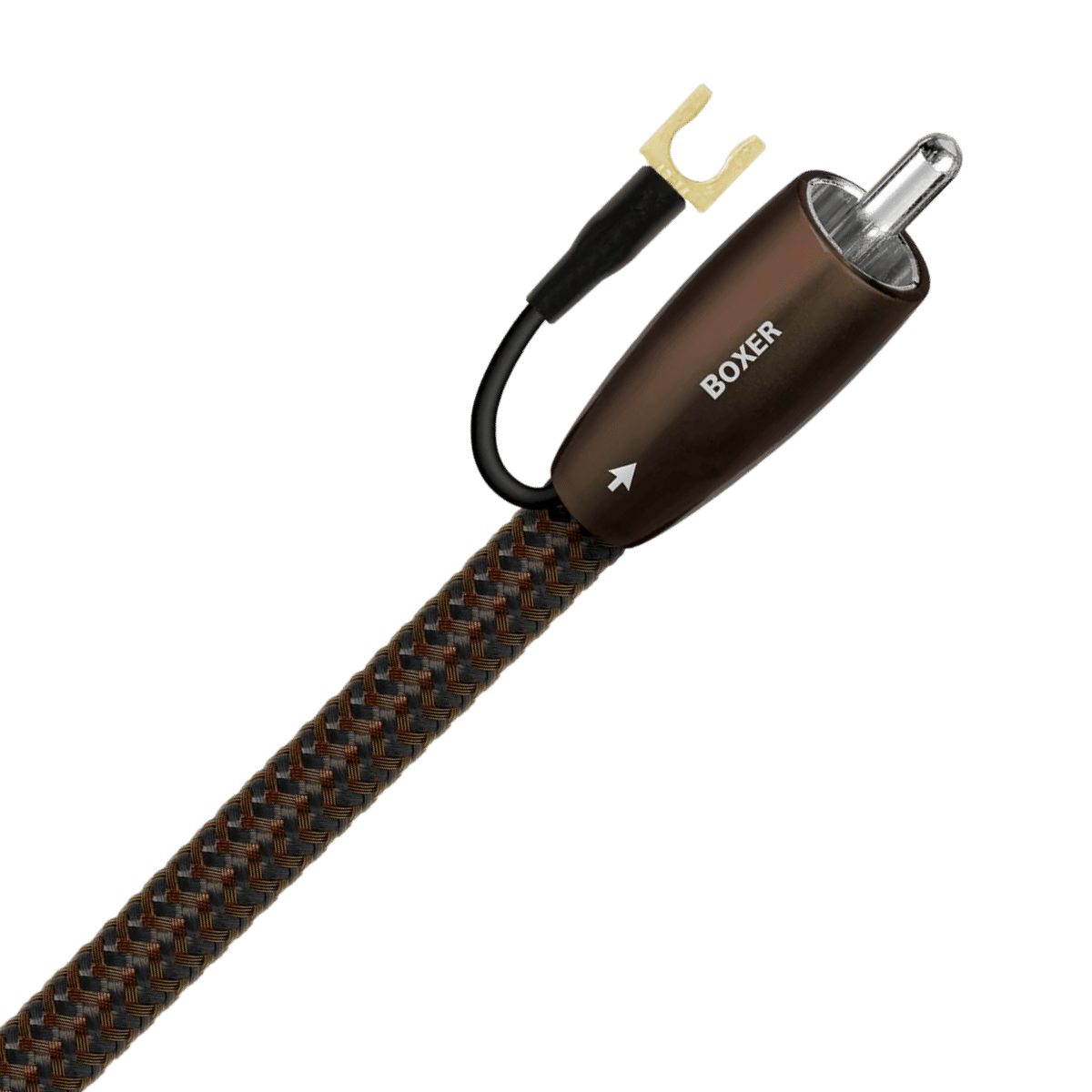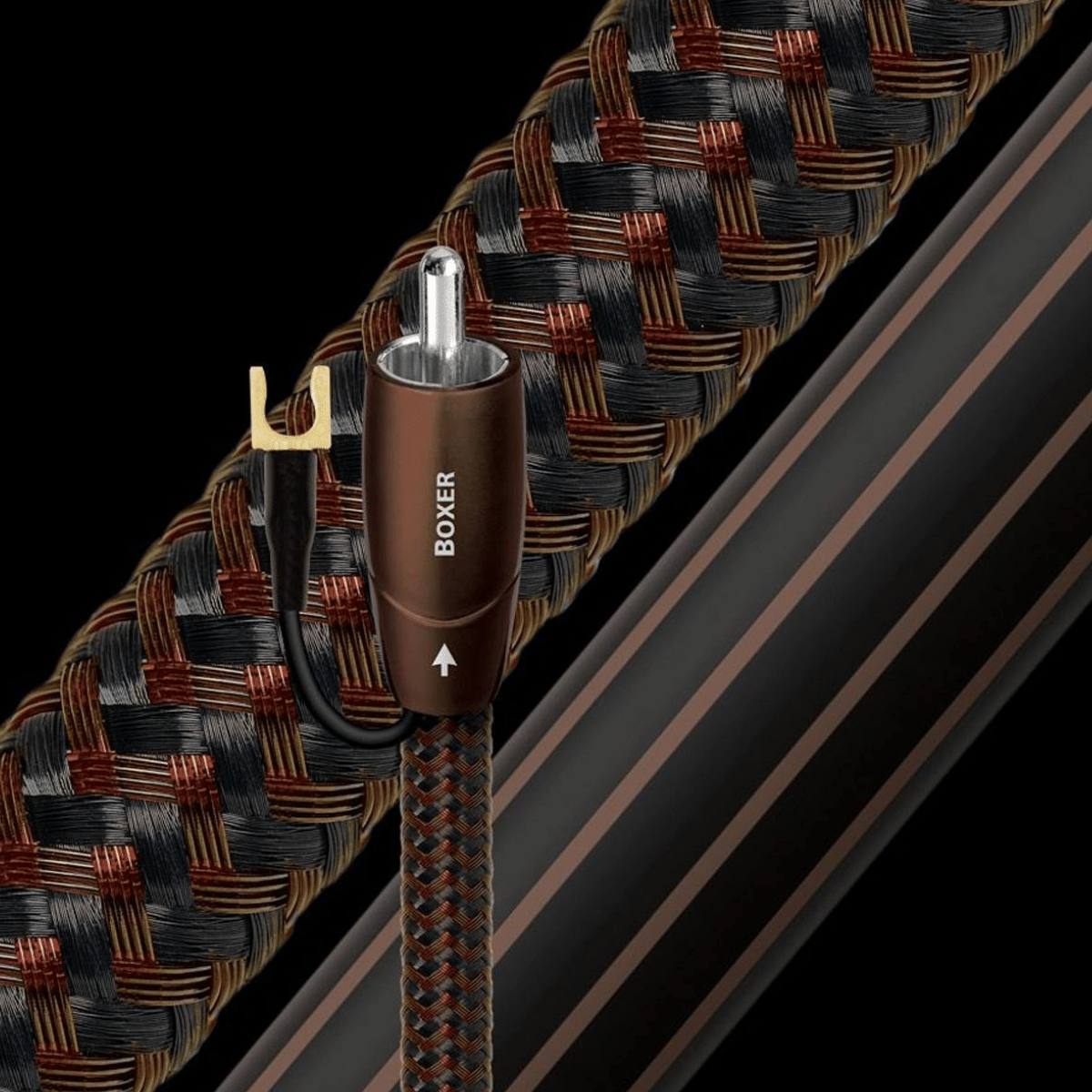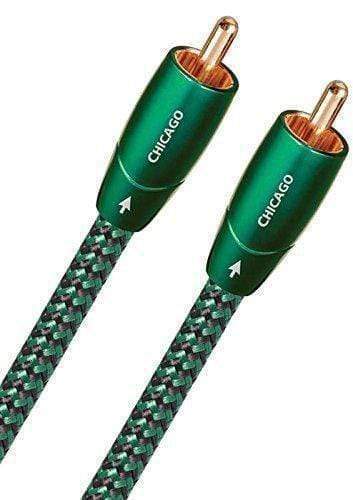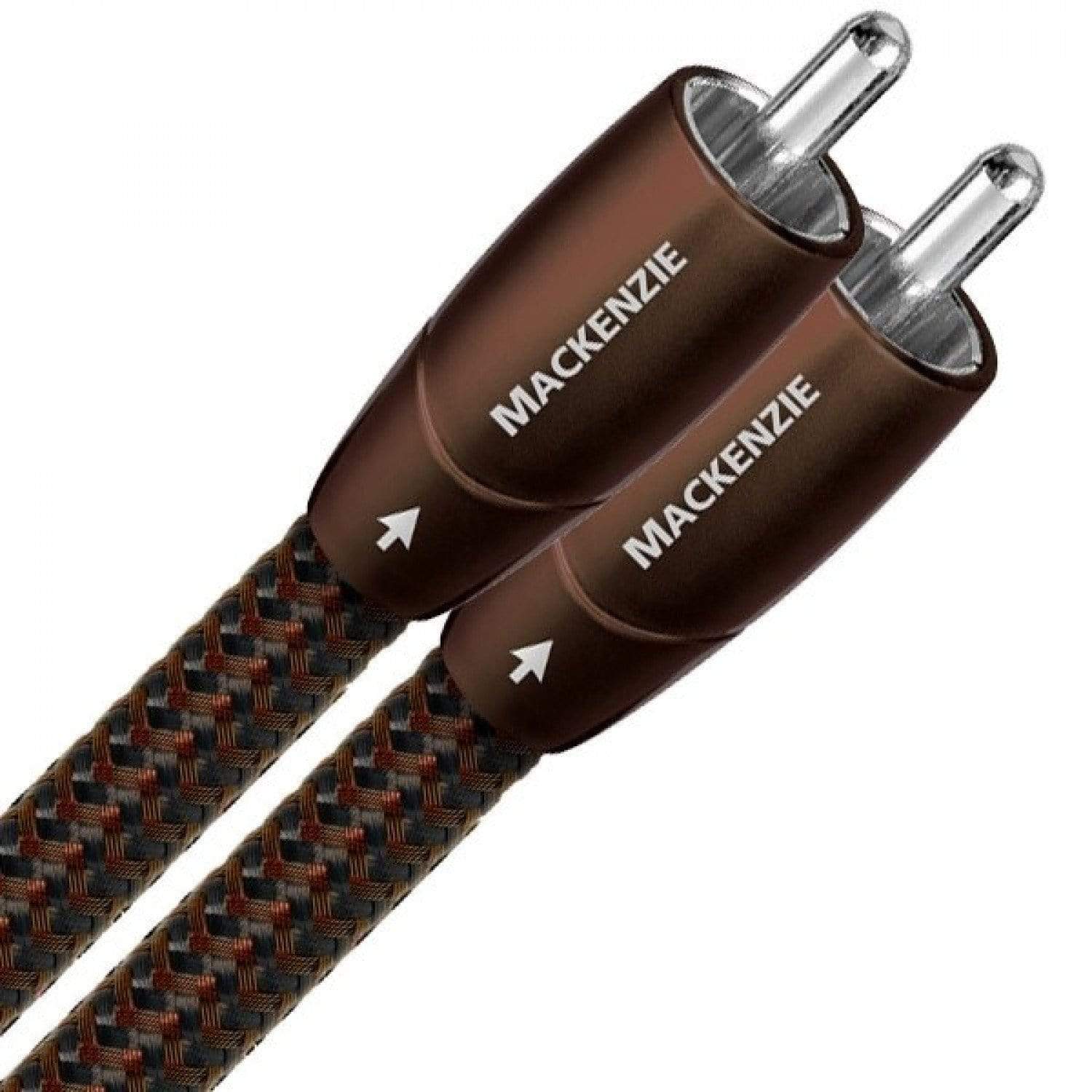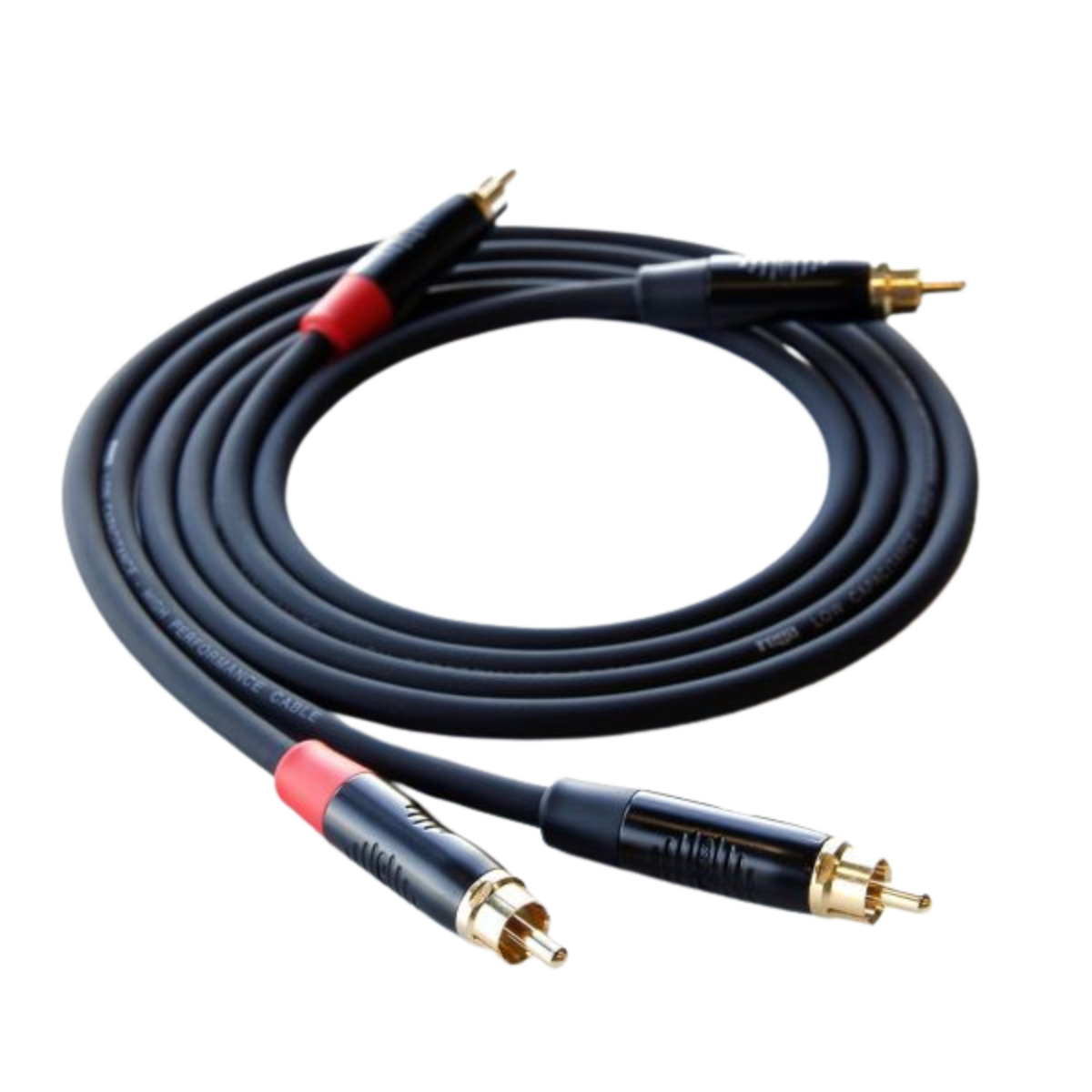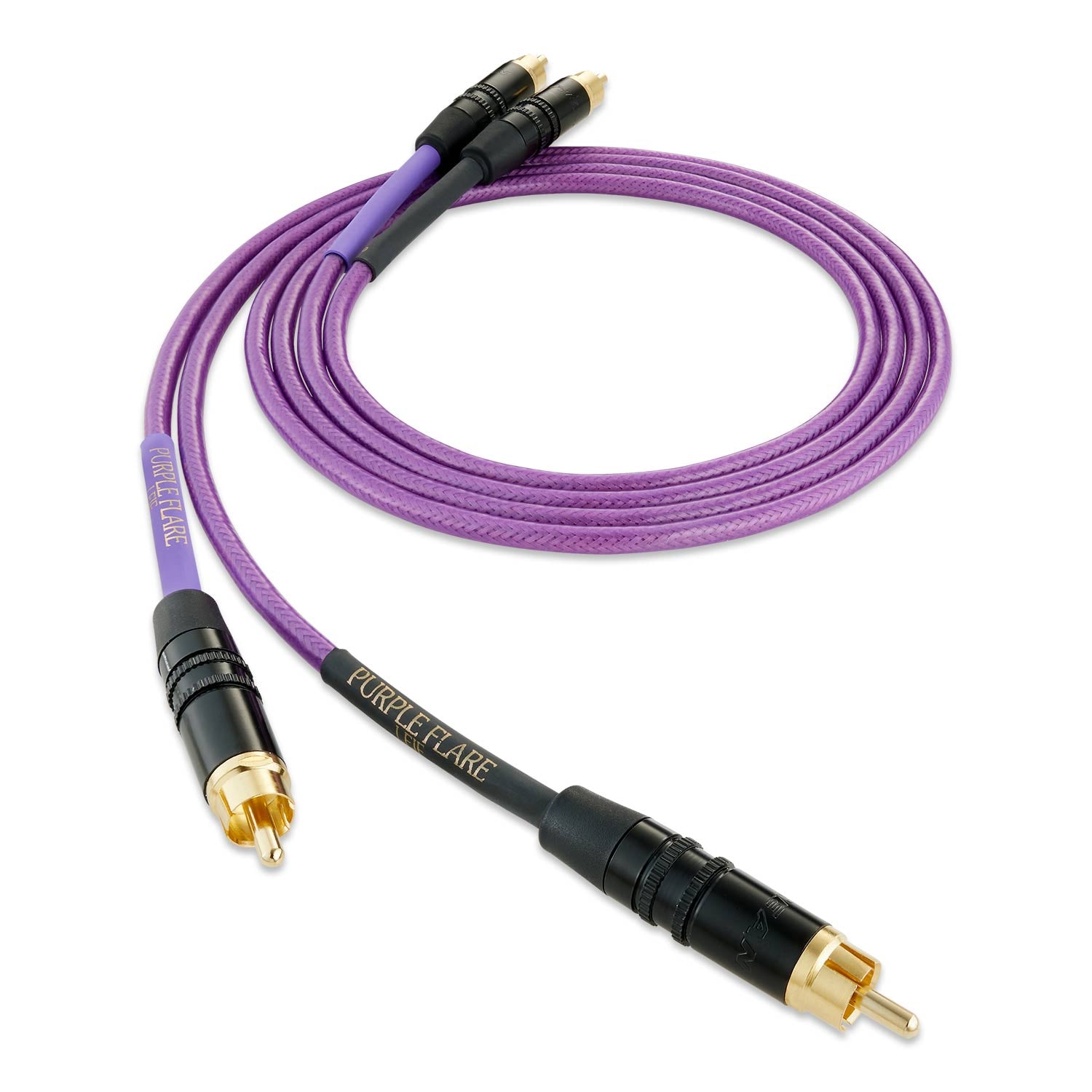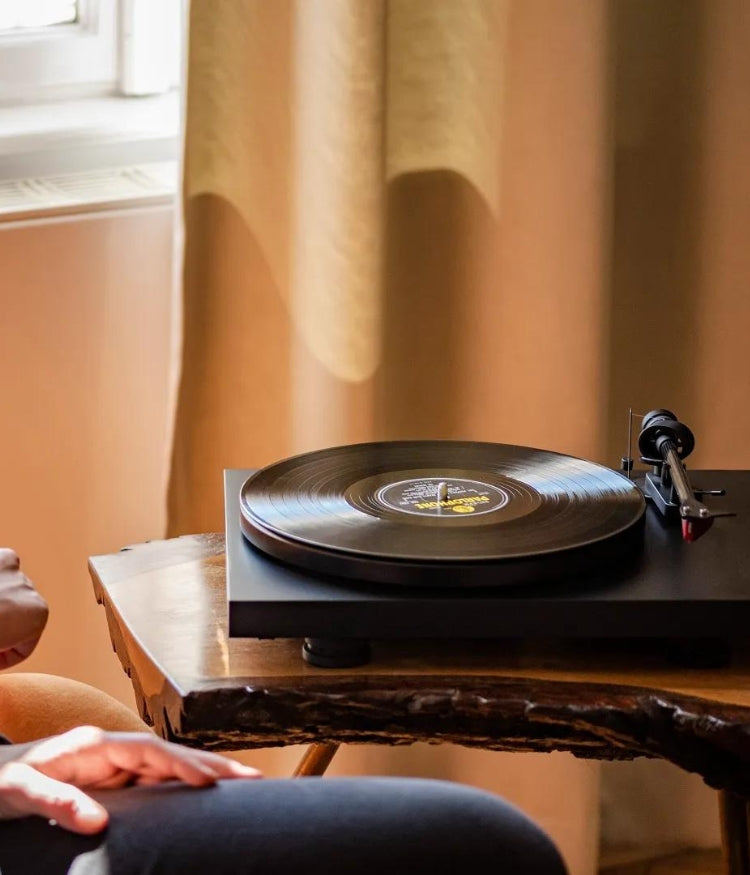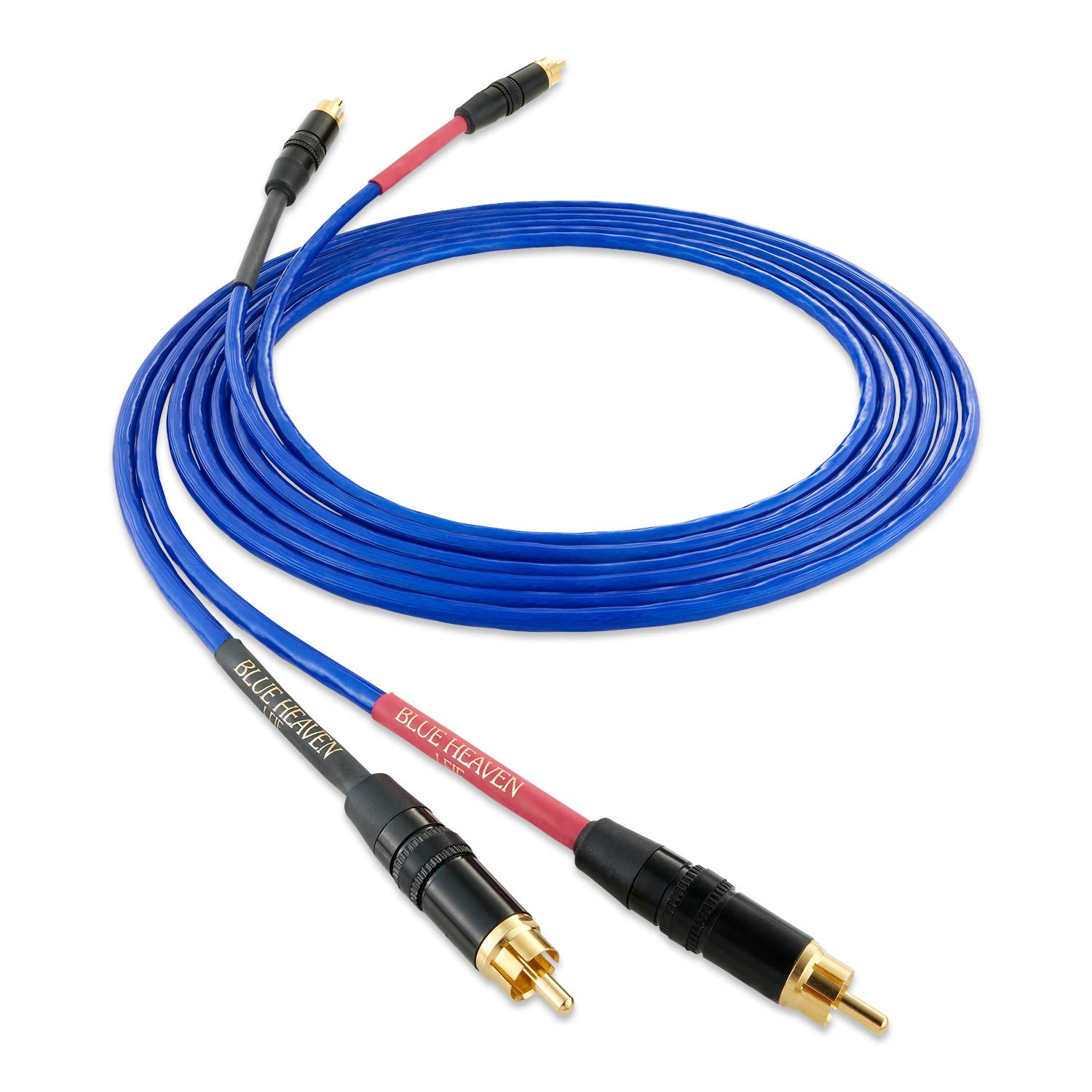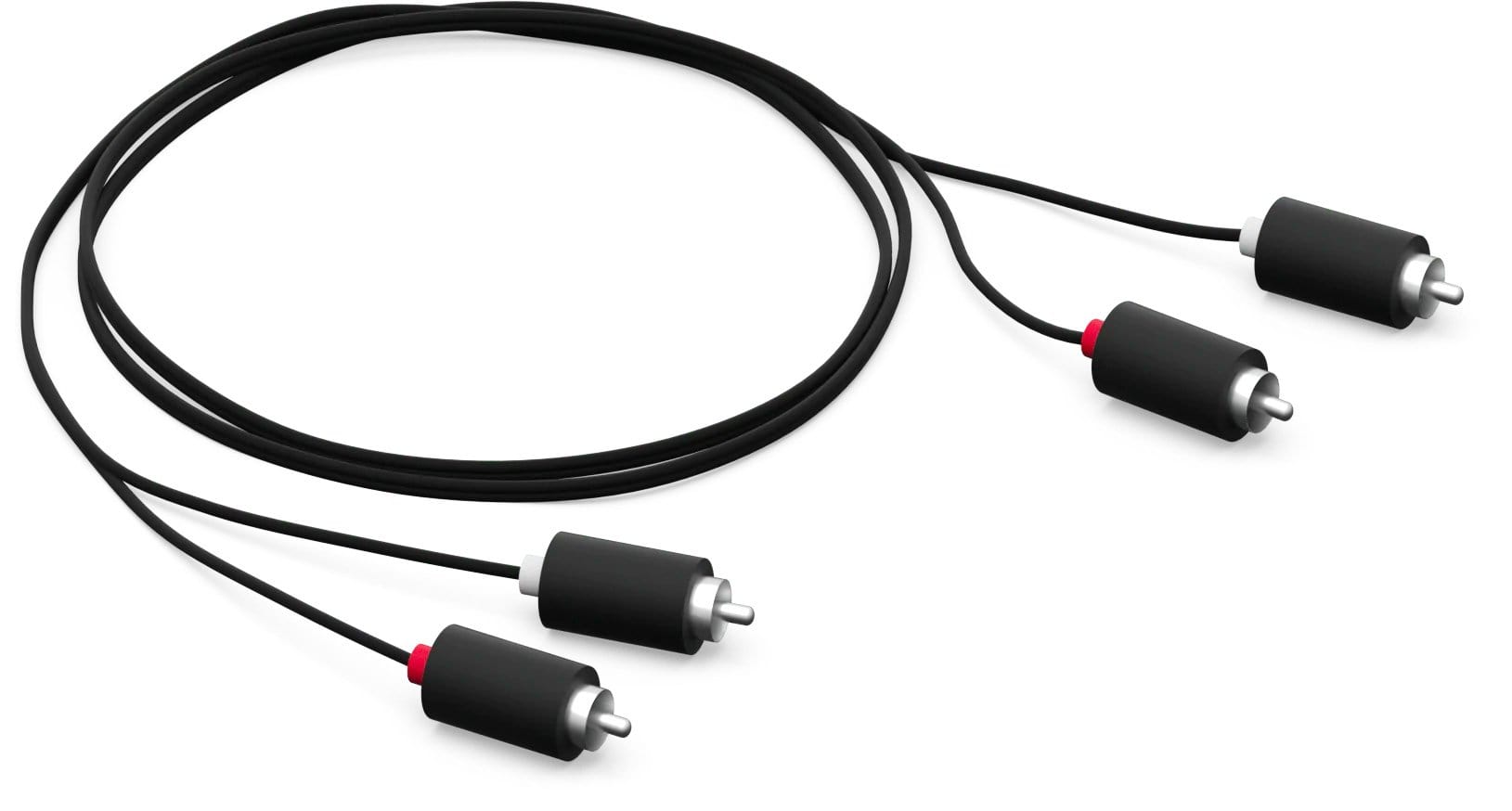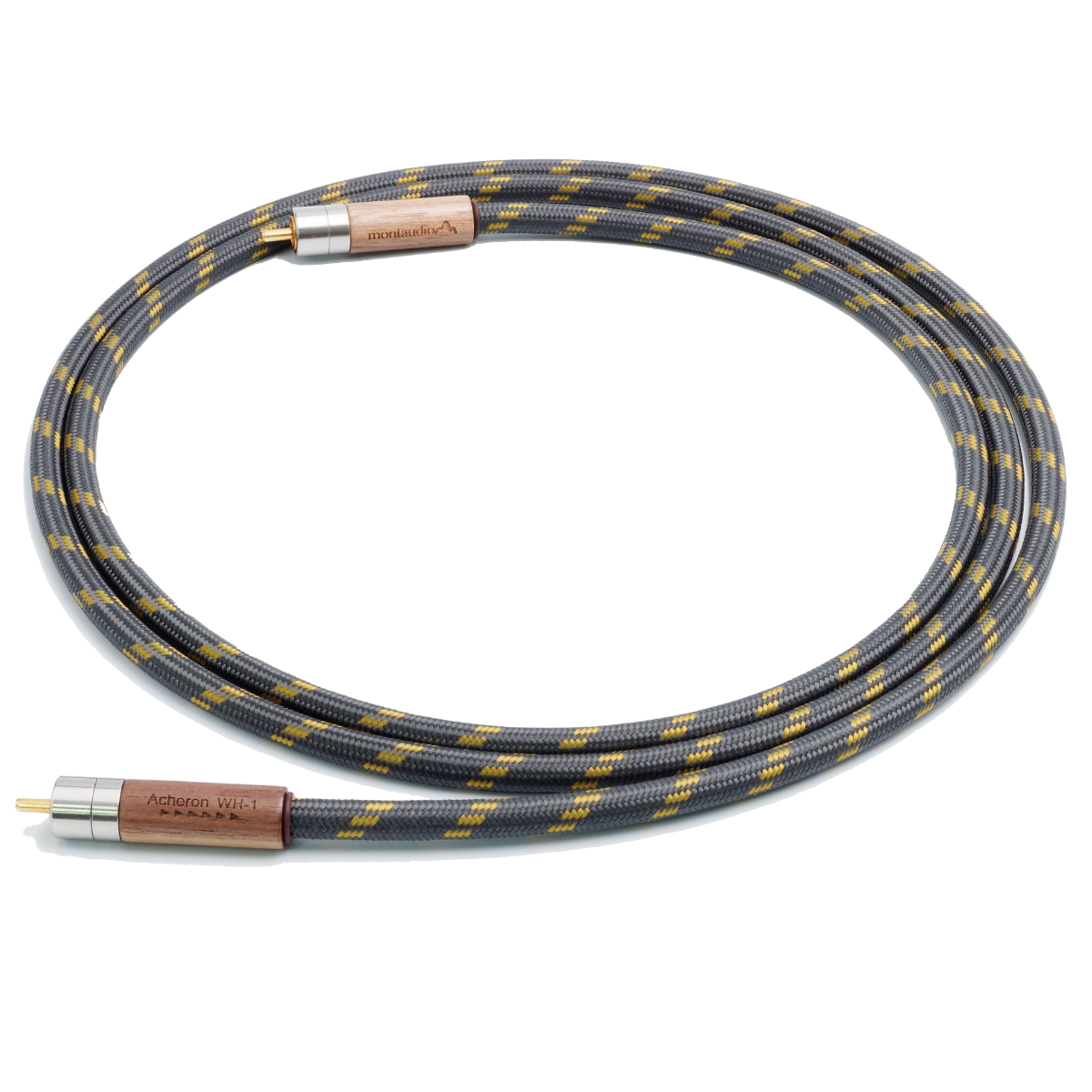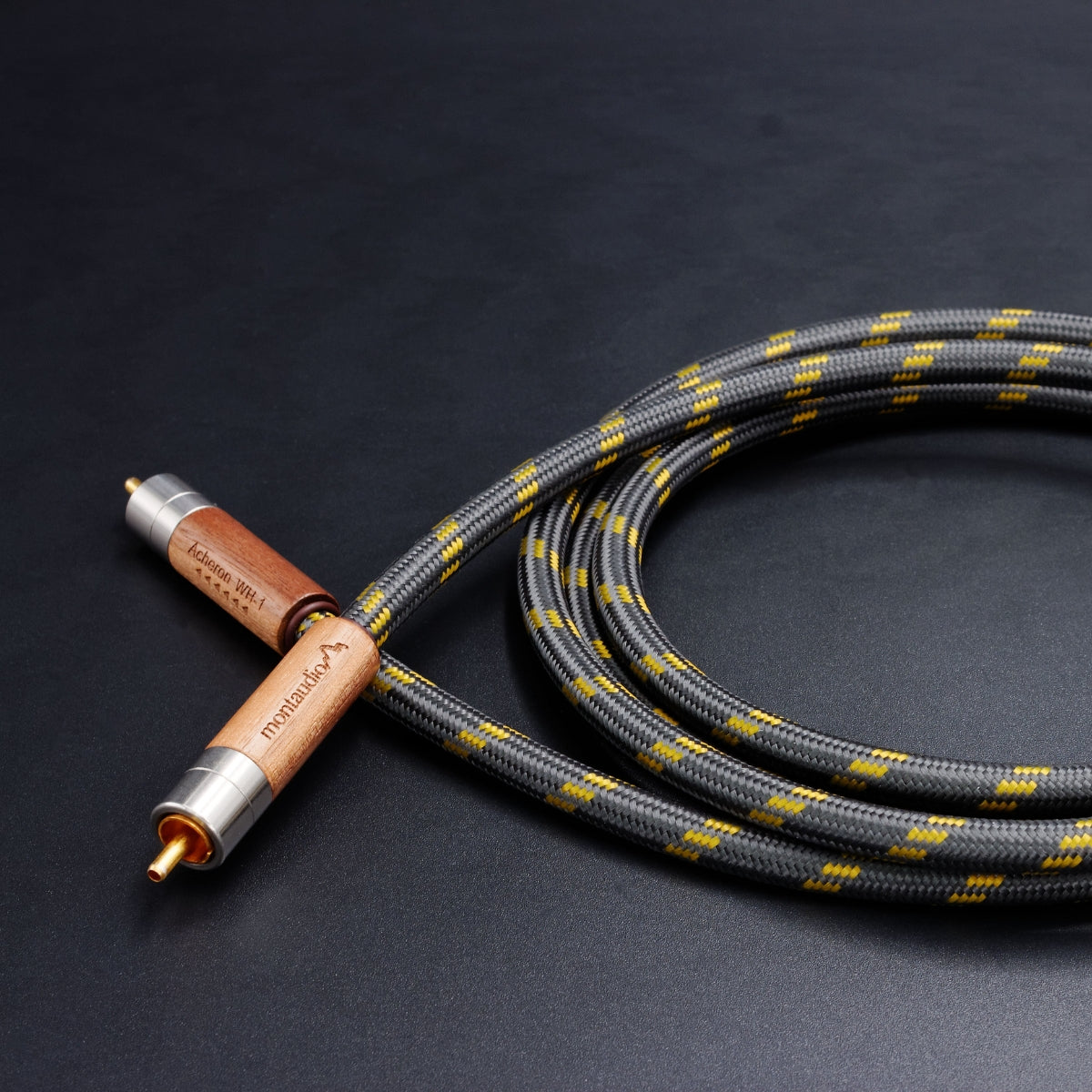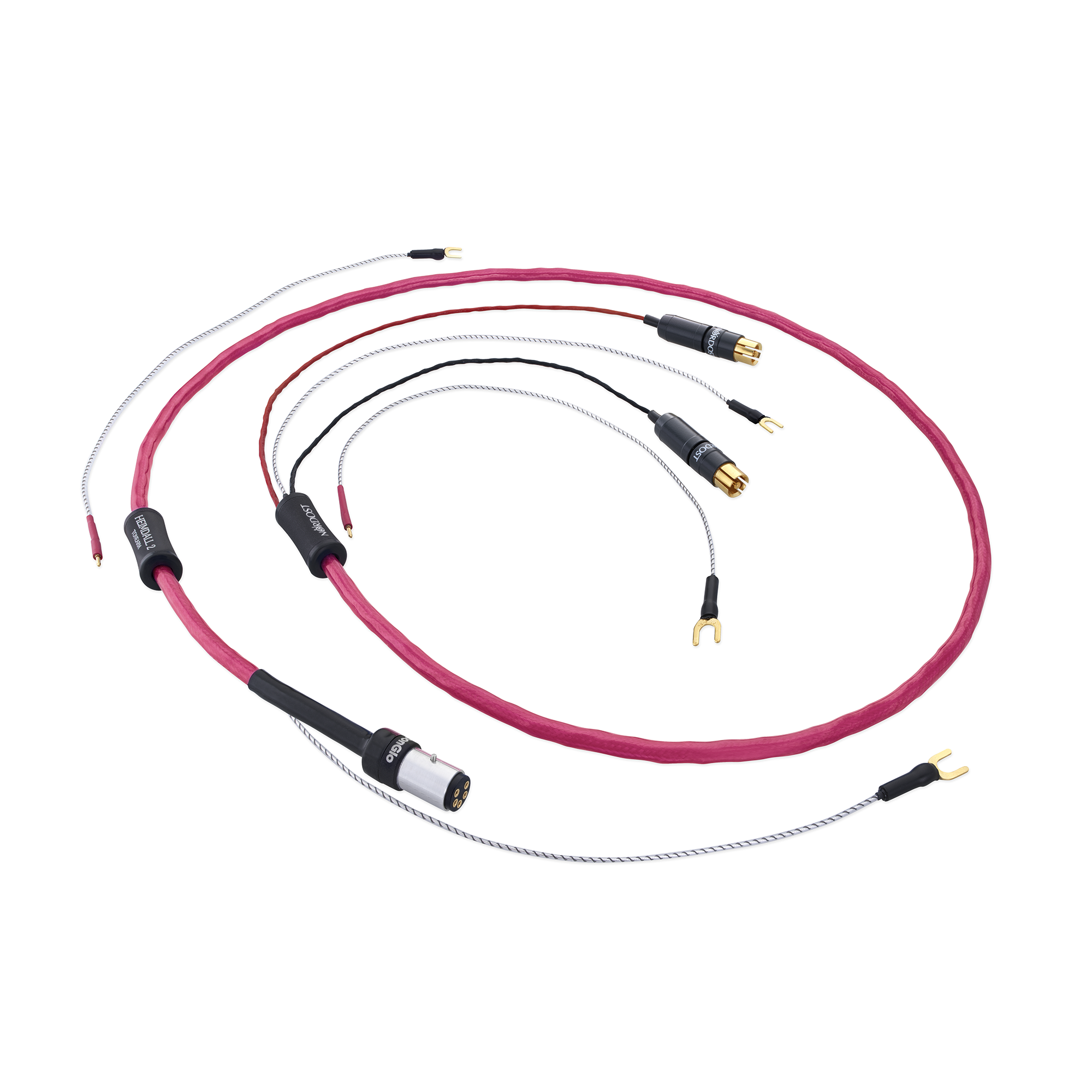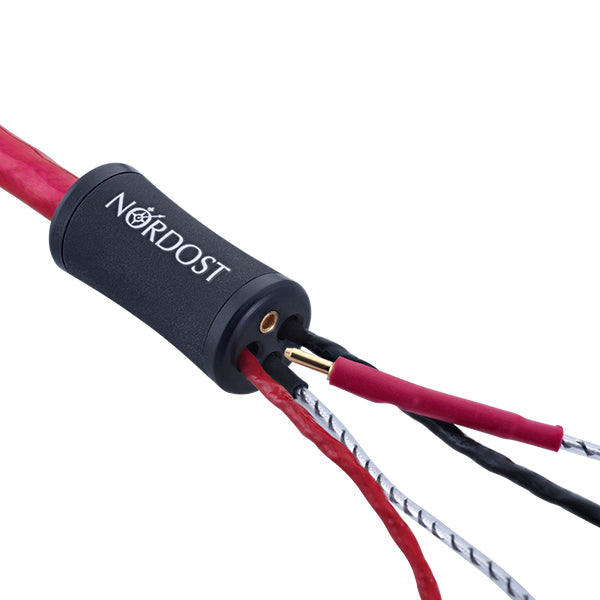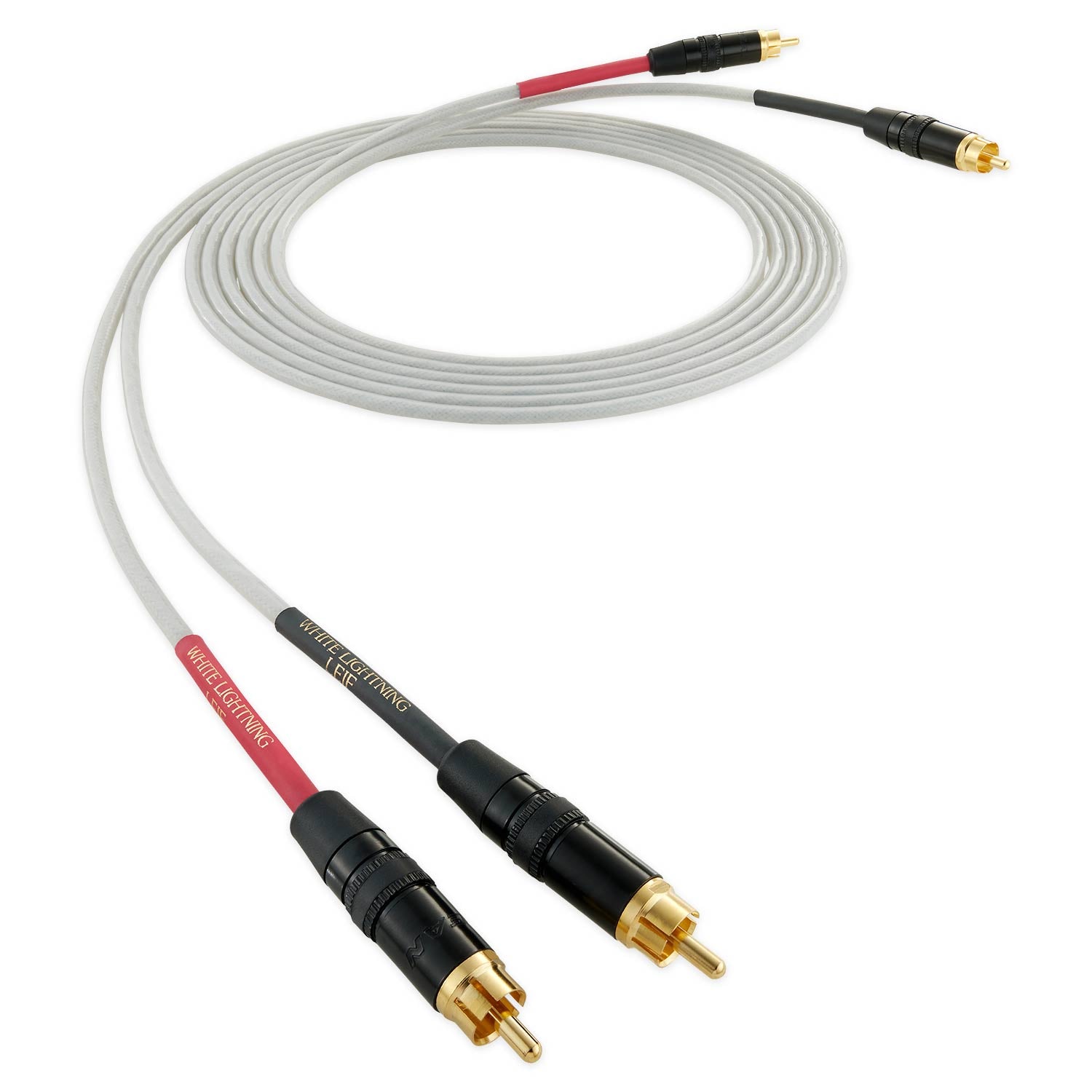
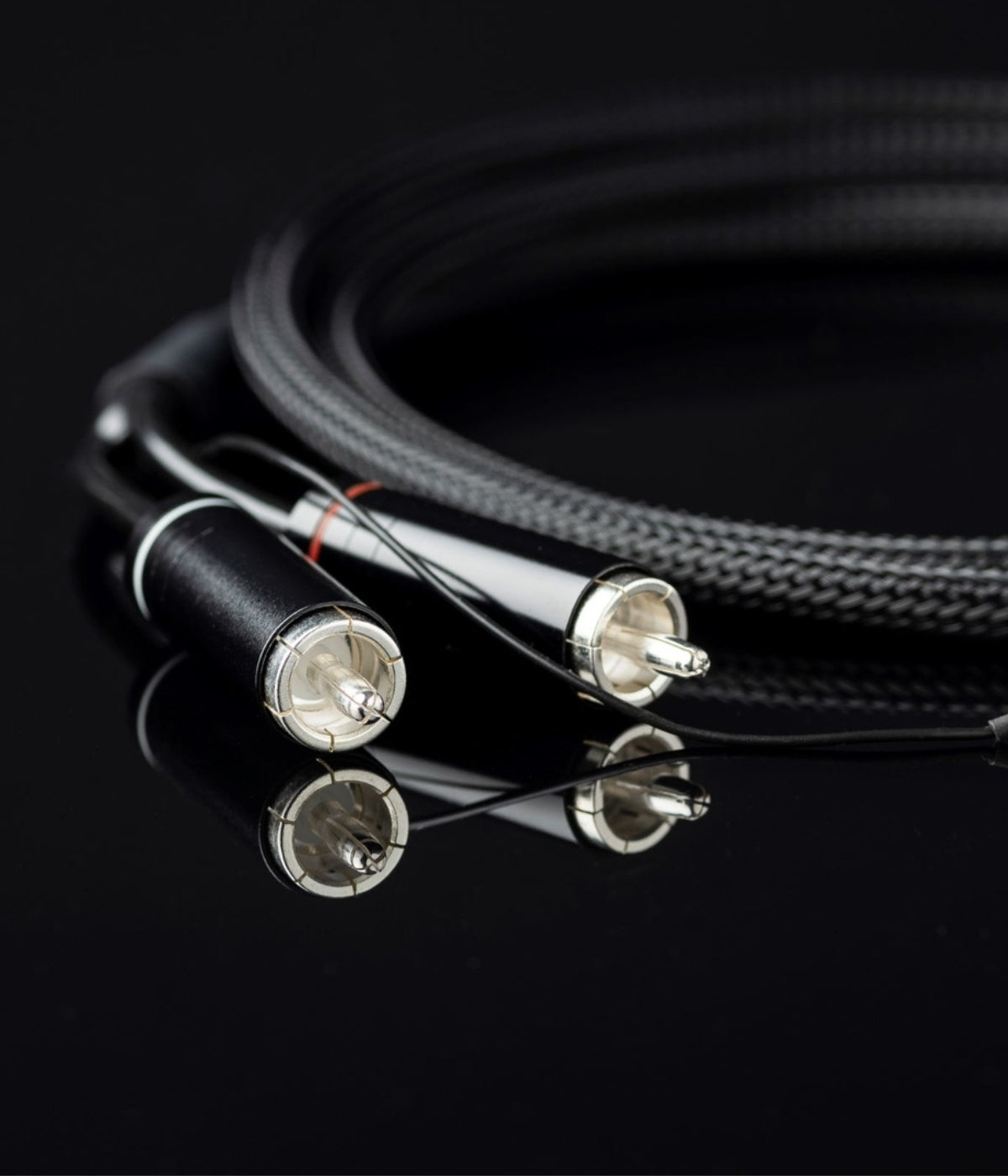
RCA Cables
Filters
34 products
TELL ME MORE ABOUT
RCA Cables
RCA cables, with their iconic red and white connectors, have been a staple in the audio world for decades. Originally introduced as the "Radio... Read More
RCA cables, with their iconic red and white connectors, have been a staple in the audio world for decades. Originally introduced as the "Radio Corporation of America" connectors, these cables have become synonymous with audio and video connectivity. Serving as the bridge between various audio components, RCA cables are essential for transmitting analog signals with clarity and precision. Whether connecting a turntable to an amplifier, a DVD player to a television, or integrating other components into a hi-fi system, RCA cables play a pivotal role.
What are RCA Cables?
RCA cables, named after the "Radio Corporation of America" which introduced them in the 1940s, are a type of electrical connector commonly used in the audio and video industry. Recognizable by their red, white, and sometimes yellow connectors, these cables are designed to transmit analog audio and video signals between devices. Each colour corresponds to a specific signal: red and white typically represent right and left audio channels, respectively, while yellow is designated for composite video.
Constructed with a central pin and an outer shield, RCA cables are designed to carry both line-level and low-frequency signals. The central pin transmits the signal, and the outer shield serves as the ground, ensuring minimal interference and signal degradation.
Over the years, RCA cables have become a standard for connecting a wide range of audio equipment, from amplifiers and speakers to turntables and televisions. Their versatility and simplicity have made them a go-to choice for both professionals and enthusiasts. While they might seem basic, the quality of an RCA cable can significantly influence sound and image quality. As such, they remain an integral component in ensuring that audio and visual content is delivered with clarity and fidelity.
The Key Different Types of RCA Cables:
RCA cables, while universally recognized by their distinct connectors, come in various types tailored to specific audio and video applications.
Here's an overview of the primary variations:
-
Stereo Audio RCA: The most common type, featuring red and white connectors, is used to transmit stereo audio signals. The red connector carries the right channel, while the white one handles the left channel.
-
Composite Video RCA: Identified by its yellow connector, this cable transmits standard-definition video signals between devices like DVD players and televisions.
-
Component Video RCA: This set comprises three cables, usually coloured red, green, and blue. They transmit high-definition video signals by separating the video into different components, ensuring better image quality than composite cables.
-
Coaxial Digital RCA: Often coloured orange, this cable transmits digital audio signals between devices, offering a step up in audio quality compared to standard stereo RCA cables.
-
Subwoofer RCA: Specifically designed for low-frequency signals, these cables connect subwoofers to amplifiers or receivers, ensuring deep bass sounds are accurately transmitted.
-
RCA Adapter Cables: These cables have RCA connectors on one end and another type of connector, like a 3.5mm jack, on the other, facilitating connections between different devices.
Each type of RCA cable serves a unique purpose, ensuring that both audio and visual signals are transmitted with the utmost clarity and precision, catering to various equipment and setup requirements.
How to Choose the Right RCA Cables
Selecting the appropriate RCA cable is crucial for achieving optimal audio and video performance.
If you're at all in doubt about which cable is right for you, don't hesitate to reach out - however, in the meantime here are some factors to consider when making your choice:
Purpose of Use: Determine the primary use of the cable. If you're connecting a DVD player to a TV, a composite video RCA might be suitable. For stereo audio, the standard red and white RCA cables would be apt.
Cable Length: Measure the distance between the devices you intend to connect. Opt for a cable that's slightly longer than required to avoid undue tension, but remember that very long cables can sometimes result in signal degradation.
Build Quality: A well-constructed cable with robust connectors and quality insulation ensures better signal transmission and longevity. Gold-plated connectors, for instance, offer superior conductivity and resistance to corrosion.
Shielding: Good shielding protects the signal from external interference, such as electromagnetic or radio frequency noise. This is especially vital in setups with multiple electronic devices.
Cable Flexibility: A flexible cable can be more manageable, especially when routing through tight spaces or when portability is a concern.
Budget and Brand: While it's essential not to compromise on quality, there's a wide range of RCA cables at different price points. Reputable brands often guarantee better build quality and performance.
How to Connect RCA Cables
Connecting RCA cables is a straightforward process, but ensuring it's done correctly is essential for optimal audio and video performance.
Always refer to the manufacturer's specific instructions, however, here's a rough step-by-step guide that suits most cables:
-
Power Down Devices: Before making any connections, ensure all devices are turned off. This precaution prevents potential damage and ensures safe handling.
-
Identify Ports and Colors: Examine the back or sides of your devices to locate the RCA ports. They are typically colour-coded to match the RCA cable connectors: red and white for audio and yellow for video.
-
Match and Connect: Firmly insert the RCA connectors into the corresponding coloured ports. Ensure the connectors are pushed in completely for a secure and stable connection.
-
Avoid Bending: When routing the cable, ensure it doesn't bend sharply, as this can damage the internal conductors and affect signal quality.
-
Keep Cables Organized: If you're connecting multiple RCA cables, using cable ties or clips can help keep them organized and prevent tangling.
-
Power Up and Test: Once all connections are made, power on the devices and test the audio or video. Ensure there's clear sound and picture without any interference or distortion.
-
Adjust as Necessary: If you encounter issues, double-check the connections, ensuring the right cables are connected to the correct ports.
Final Thoughts
RCA cables have long been a foundational element in the audio and video landscape, providing reliable and straightforward connectivity for a myriad of devices. Their enduring presence in modern setups is a testament to their efficiency and versatility. Whether you're setting up a vintage stereo system or integrating modern equipment, understanding and choosing the right RCA cable is paramount.
Some Quick FAQ:
What does RCA to RCA mean?
"RCA to RCA" refers to a type of connection where both ends of the cable have RCA connectors. This type of cable is commonly used to connect audio devices that have RCA output and input ports, such as connecting a CD player to a stereo receiver.
What is the length of a standard RCA cable?
The length of a standard RCA cable can vary, but common lengths can include from 0.5 metres to 5 metres, however, RCA cables are available in various lengths to suit different needs.
Can RCA cables be used for video signals?
Yes, RCA cables can be used for video signals. They are commonly used for analog video signals, such as connecting a DVD player to a TV. However, for high-definition video signals, HDMI cables are typically used.
Can RCA cables carry stereo audio?
Yes, RCA cables are capable of carrying stereo audio signals. They have two channels, typically represented by the red and white RCA plugs, which carry the left and right audio channels respectively.
What are some common audio applications of RCA cables?
RCA cables are commonly used for various audio applications, such as connecting a CD player to a stereo receiver, connecting a turntable to a preamp, connecting speakers to an amplifier, or connecting a subwoofer to a home theatre system.
NEED MORE GUIDANCE?
We are here to help
Check out some of our most commonly asked questions.
What do I need to play records?
Getting into vinyl? That’s awesome! We have some curated turntable Hi-Fi packs, with everything you'll need to get spinning right away. But if you want to build your own, read on for all the details.
First off, you'll need a turntable. It's the star of the show, so make sure it’s in good nick, with a decent cartridge and stylus (needle).
Next, there’s the phono preamp. Some turntables or amplifiers come with one built-in, but if yours doesn’t, you’ll need one as a bridge between your turntable and amplifier or powered speakers.
For the sound output, you’ve got two options. You can go with a traditional setup involving an integrated amplifier to take the signal from your phono preamp and power your passive speakers. Alternatively, you can opt for powered speakers, which have the amplifier built in – a handy all-in-one solution.
Speaking of speakers, good ones are a must for that rich, warm vinyl sound we all love. Whether you go for bookshelf or floorstanding speakers (or powered ones) depends on your space and budget.
And there you go! With these essentials, you’ll be ready to dive into your vinyl collection and enjoy that classic sound.
What can a wireless speaker do?
Wireless speakers are a game-changer for how you enjoy music and audio around the house. First off, they let you stream music wirelessly from your phone, tablet, or computer, so no more messing about with cables. You can easily play tunes from Spotify, Apple Music, Tidal or whatever streaming service you fancy.
If you’re into having music everywhere, many wireless speakers offer multi-room audio. You can sync them up to play the same music in every room or control what plays in each room individually, perfect for parties or just keeping the vibes consistent throughout your home.
Voice control is another brilliant feature. Many come with built-in assistants like Alexa, Google Assistant, or Siri. You can control your music with just your voice, ask for the weather, set reminders, or even control other smart home devices.
Sound quality? These little gadgets often pack a punch, delivering high-quality audio that can rival traditional wired setups. Some even offer 360-degree sound, filling the room with music from every angle.
In a nutshell, wireless speakers bring flexibility, convenience, and top-notch sound to your audio experience, making them a fantastic addition to any home. Whether you’re hosting a party, working from home, or just chilling out, they make listening to music a breeze.
How do you choose the right speaker & amplifier combination?
Deciding on a good speaker and amplifier combination is like putting together a perfect wine and cheese pairing—it’s all about balance and harmony. Here’s a conversational guide to help you through it:
First, consider your speakers. These are your main players, so you want to choose ones that fit your space and listening preferences. If you love deep bass and have a bit of room, floorstanding speakers might be your go-to. For smaller spaces or a more subtle look, bookshelf speakers are fantastic.
Now, onto the amplifier. This is where things get interesting. Your amp needs to match your speakers in terms of power and impedance. Check the wattage ratings on your speakers—your amplifier should provide enough power to drive them properly. Too little power and you’ll be missing out on sound quality; too much, and you risk damaging your speakers.
Next, think about the impedance (measured in ohms). Your amp and speakers should be compatible here too. Most speakers are rated at 8 ohms, but some can be 4 or 6. Make sure your amplifier can handle the impedance of your speakers to avoid any performance issues.
Another important factor is the type of sound you’re after. Some amps are known for their warm, rich tones, while others might be more neutral or even slightly bright. It’s a bit like choosing between a vinyl record and a digital stream or CD —each has its own charm. If possible, listen to different amp and speaker combinations to see what sounds best to your ears.
If purchasing online, note that at LE, we have made recommendations on speaker & amplifier combinations that we think sound wonderful together within each product listing.
Don’t forget about connectivity and features. Modern amplifiers often come with a host of options like Bluetooth, Wi-Fi streaming, and various inputs for all your devices. Make sure your amp has the inputs you need for your turntable, CD player, or streaming device.
Finally, consider your budget. Great sound doesn’t always mean breaking the bank, but be prepared to invest to get a quality setup that will last.
In the end, trust your ears. Listen to a few combinations if you can, and go with what makes your music sound the best to you.
Why do I need a headphone amplifier?
If you’re diving into the world of high-quality audio, a headphone amplifier can be a real game-changer. Think of it like this: most standard devices, like your smartphone or laptop, just don’t have the oomph needed to drive headphones properly. They might get the job done, but they won’t do your music justice. A headphone amp gives your headphones the power they need, ensuring you get the volume and clarity that really makes your music shine.
It’s not just about making things louder, either. A good headphone amp can significantly improve sound quality. You’ll get clearer highs, richer mids, and tighter bass, making your favourite tracks sound even better. You might notice details you’ve never heard before, especially if you’re listening to high-resolution audio files.
Premium headphones often have higher impedance, meaning they require more power than your typical audio source can provide. A headphone amp can handle this with ease, making sure your headphones perform at their absolute best. Plus, many amps come with extra features like bass boost, equalisation, and gain control, giving you more ways to tweak the sound to your liking.
In short, if you’re passionate about your music and want to hear it in the best possible way, a headphone amplifier is definitely worth considering. It’s all about unlocking the full potential of your gear and really getting the most out of your listening experience.
Where should I start when designing a home cinema?
Designing your own home cinema? That's awesome! We are here to help walk you through the process, but as a starting point, here’s what we would recommend and where to kick things off:
First up, pick your spot. For most people this is your existing lounge room, but if you have an underused garage, or spare bedroom, then you have an opportunity to create your very own true Home Cinema experience. Find a room that’s just right—not too cramped and ideally away from noisy areas. This sets the stage for that immersive movie experience.
Next, think about how you’ll set things up. Plan where your seats will go and where to place your projector screen for the best view from every angle. It’s all about creating that comfy, cinematic vibe.
Sound matters, too. Consider if you want a wireless system for simplicity or a full surround sound speaker system with AV receiver for that surround-sound thrill. Think about soundproofing or adding acoustic panels or thick carpets to really amp up the audio quality of the room.
Now, onto the screen. Decide between a crisp TV or a projector setup, depending on your room size and personal style. Maybe even throw in some dimmable lights or smart lighting to set the mood just right.
And hey, don’t forget comfort. Invest in plush cinema seating and think about the décor—whether it’s movie posters, blackout curtains, or popcorn machine & bar area, whatever gives you that true cinema feel.
Lastly, tech it up! Make sure everything—from your Blu-Ray player & Apple TV to your gaming consoles—is set to sync perfectly with your new setup.
With these steps, you’re on your way to creating a home cinema that’s not just a space, but an experience. Enjoy movie nights like never before!

